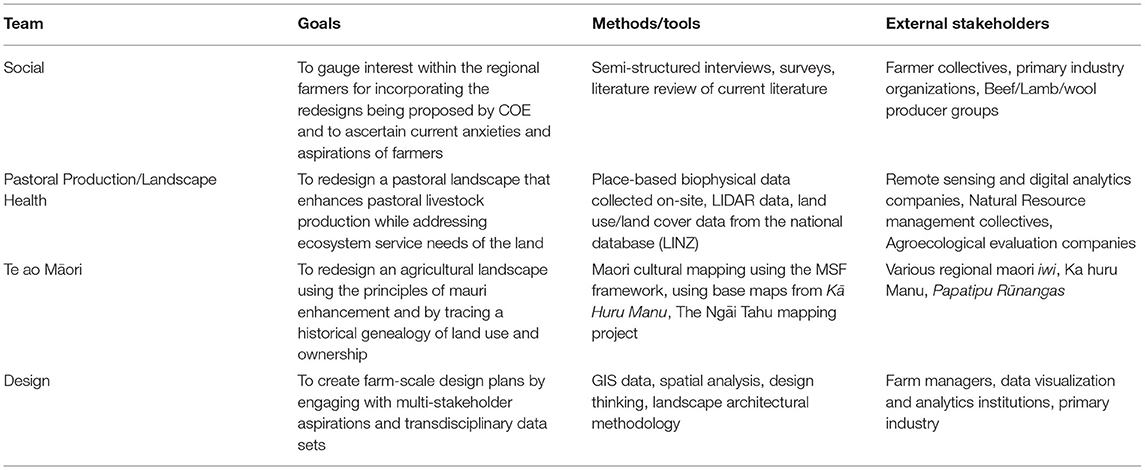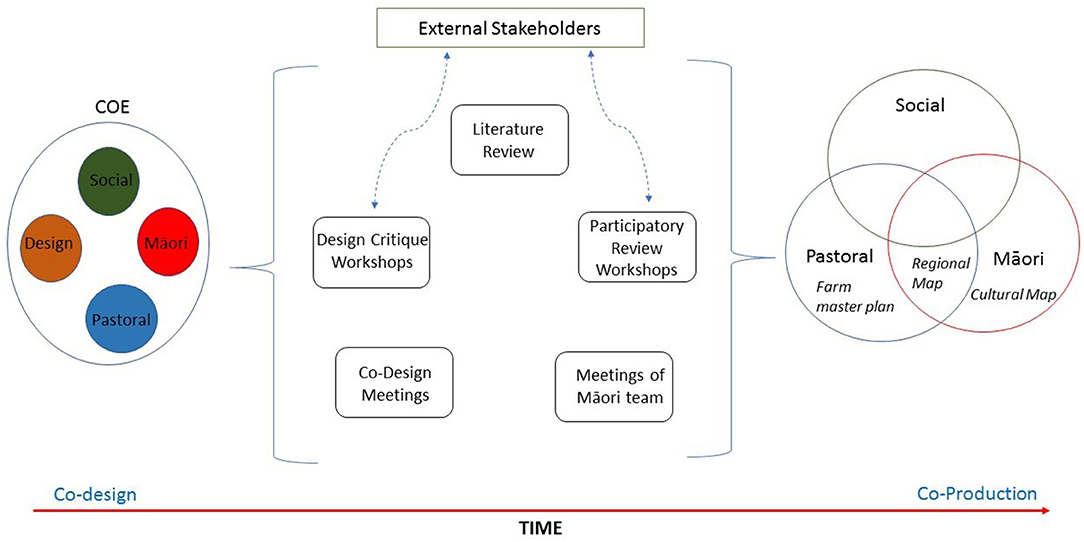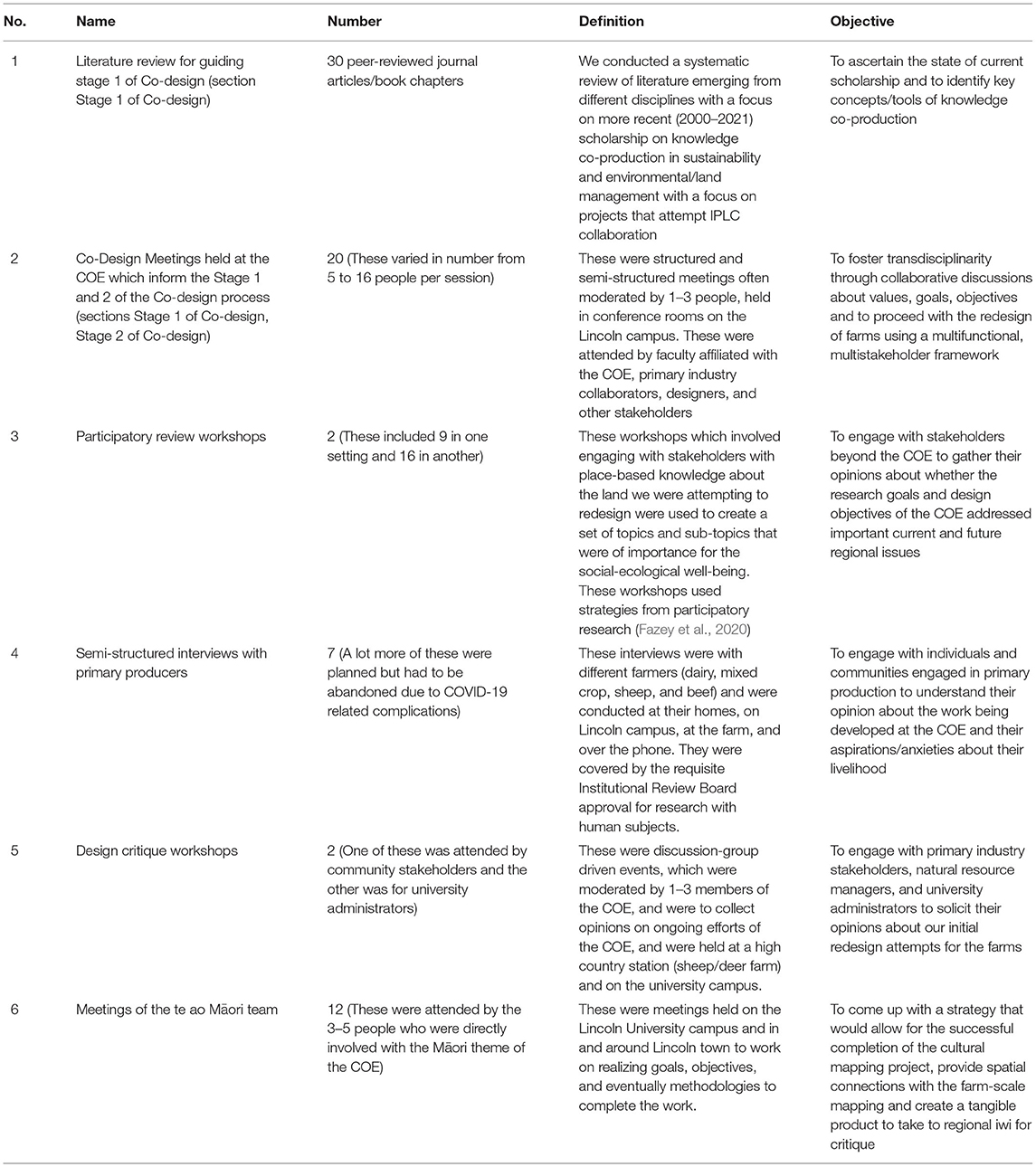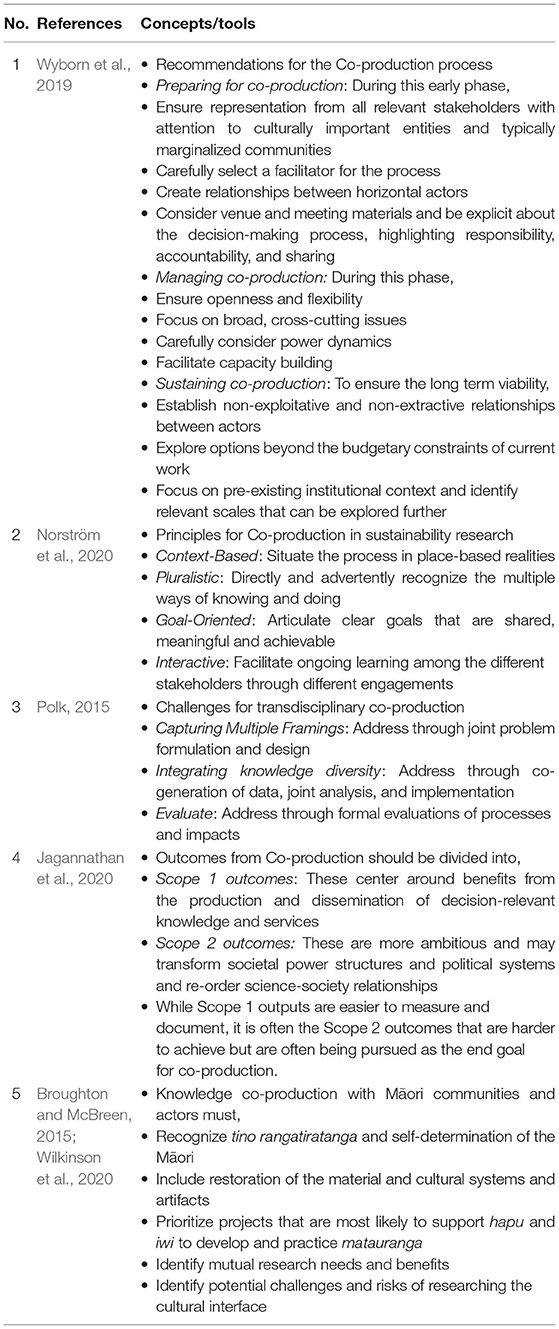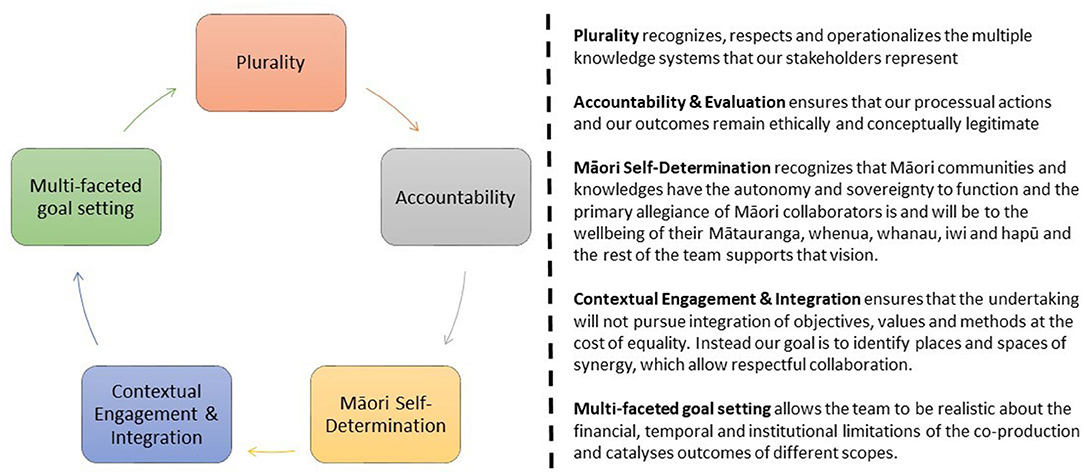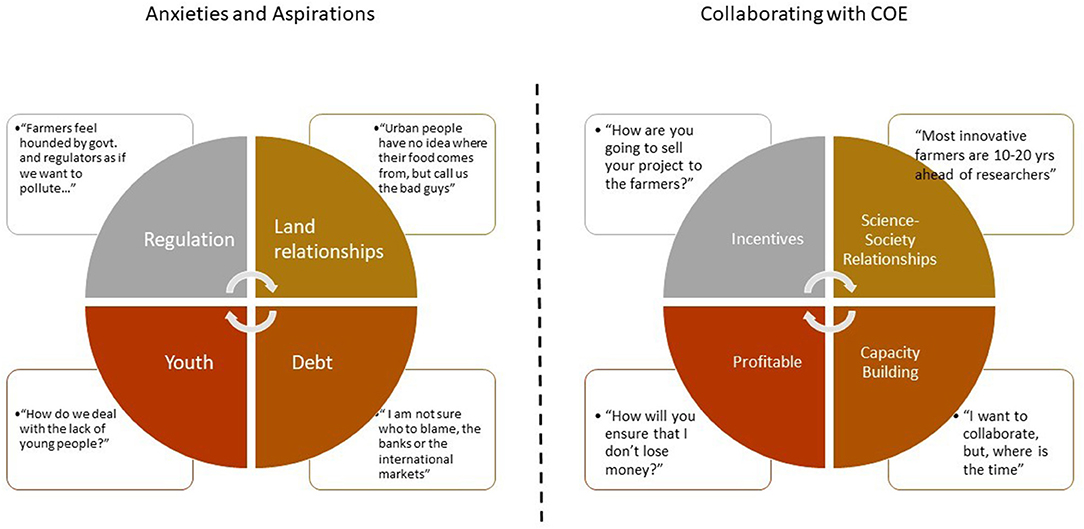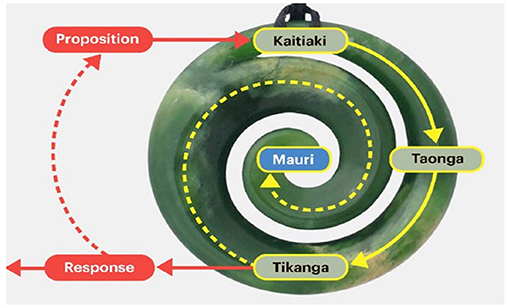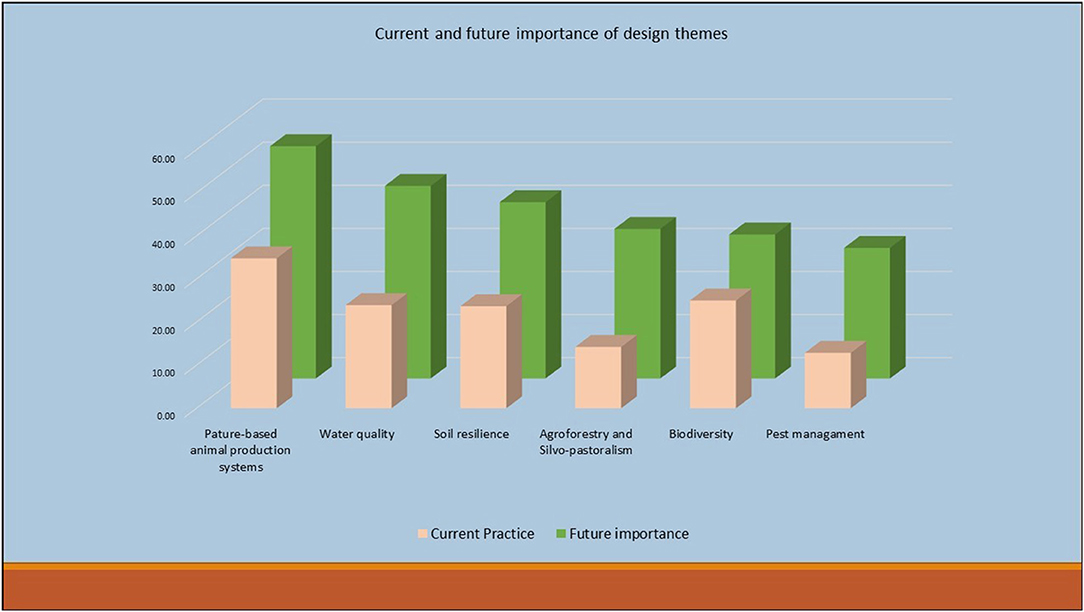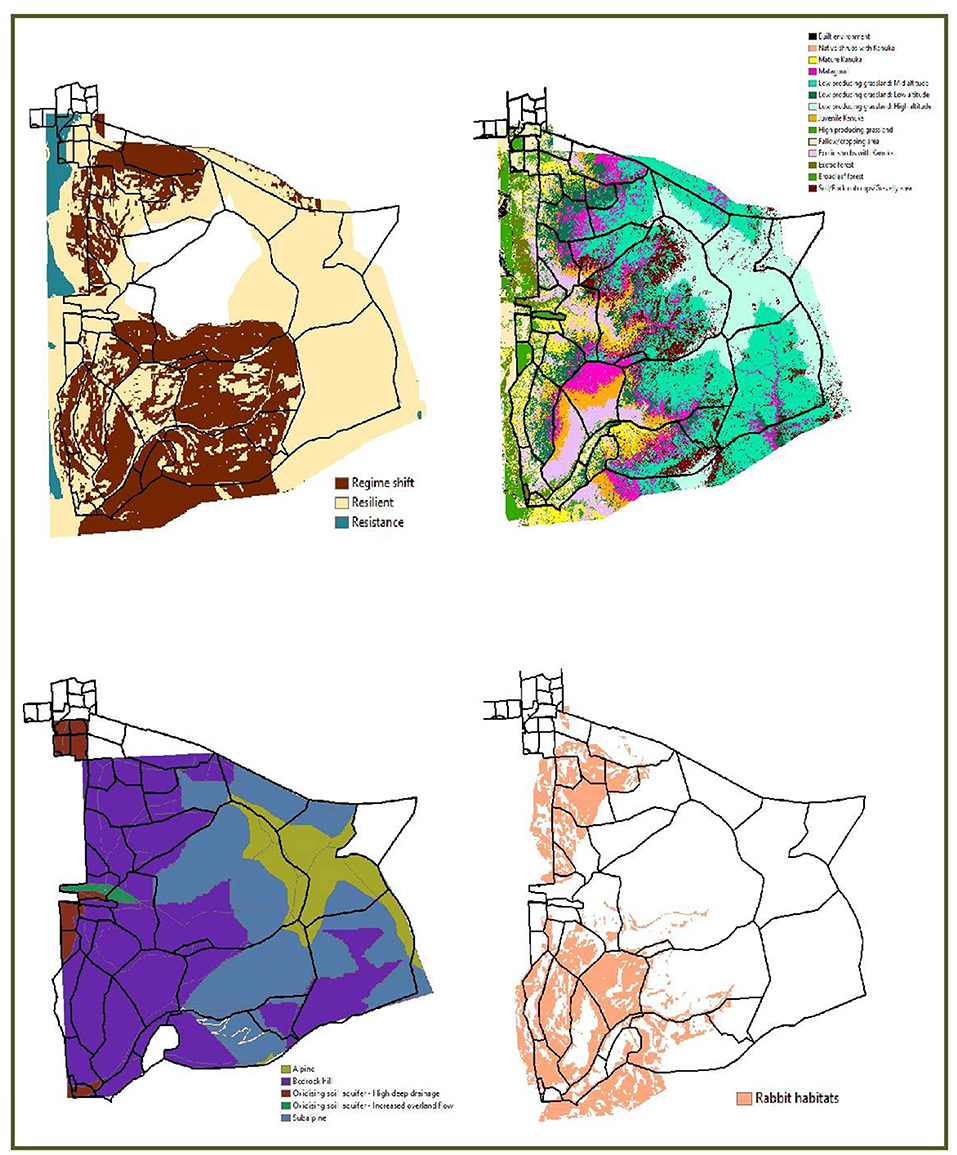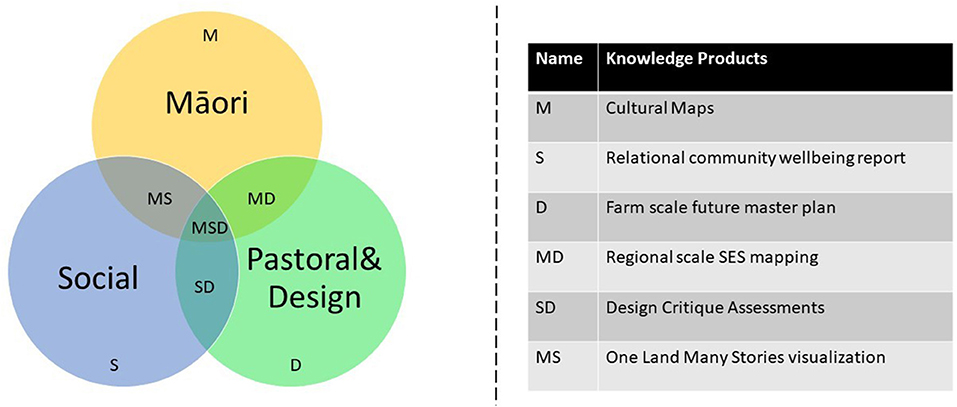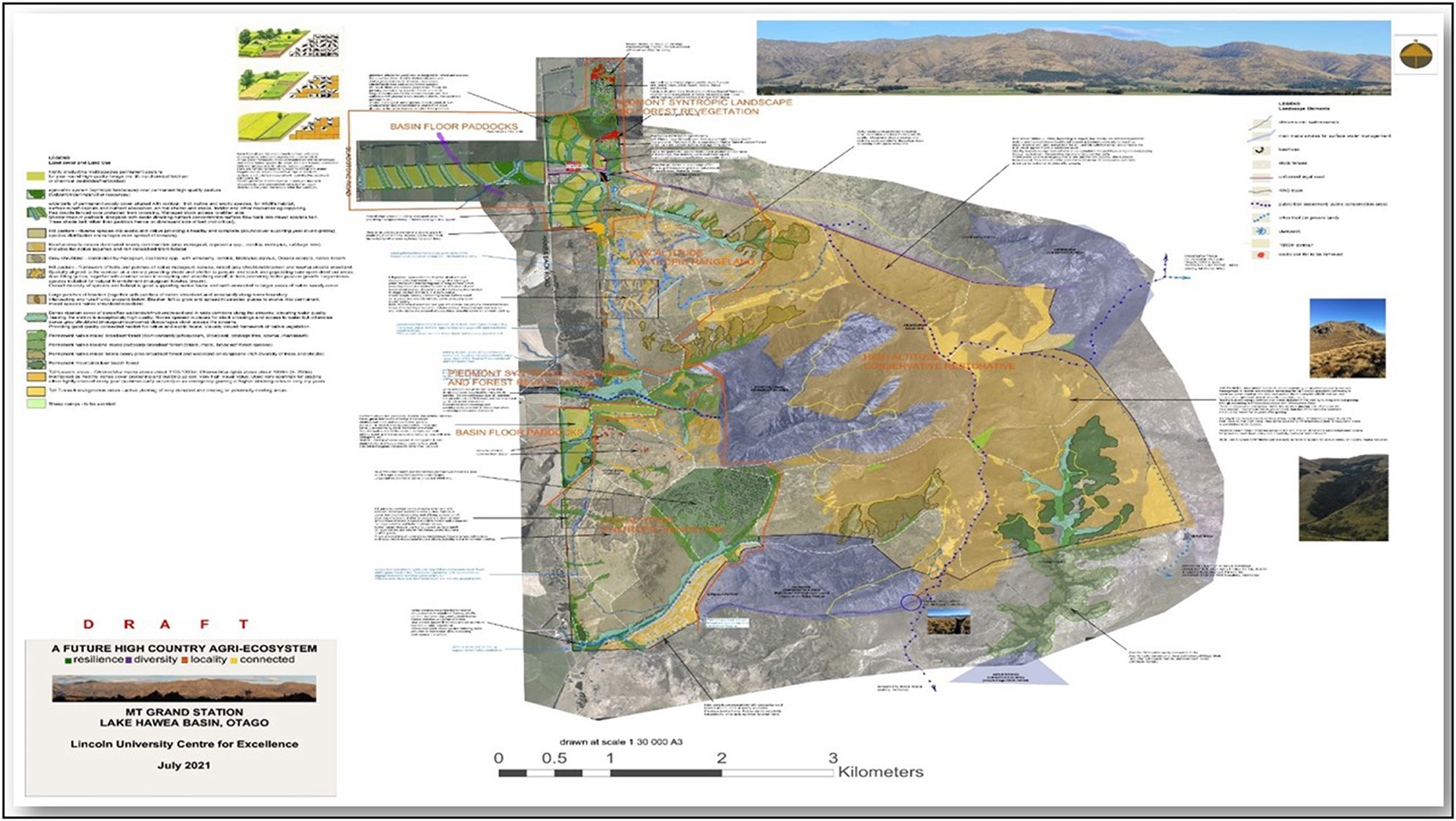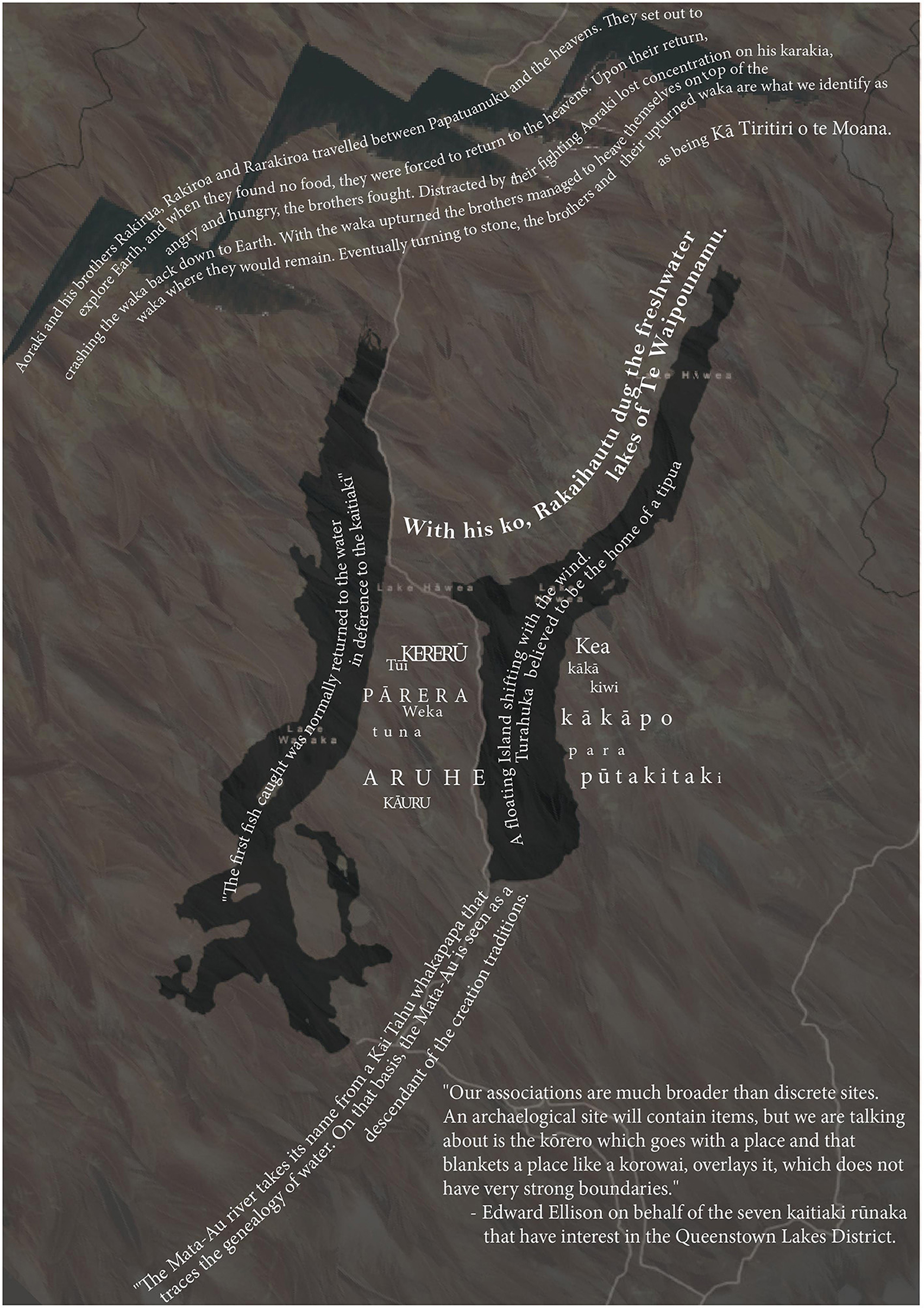- 1Lincoln University Centres of Excellence, Lincoln University, Lincoln, New Zealand
- 2New Zealand Forest Research Institute Limited (Scion), Christchurch, New Zealand
- 3Faculty of Environment, Society and Design, Lincoln University, Lincoln, New Zealand
- 4Faculty of Agriculture and Life Sciences, Lincoln University, Lincoln, New Zealand
Knowledge co-production has emerged as an important conceptual and processual tool in sustainability research addressing the needs of equity and inclusion. Indigenous communities and local people have engaged with the process of knowledge production, foregrounding their historical relationships with landscapes, based on their unique worldviews and knowledges. However, knowledge co-production, especially for multi-functional landscapes remains a contentious and complicated affair with enduring issues of power-sharing related to the different socio-political positions of stakeholders. This work explores the synergies and challenges in knowledge co-production for landscape re-design in the south Island of Aotearoa NZ through an assessment of the work done at the Centre for Excellence, Lincoln University. At this center, a multi-stakeholder team is grappling with designing a farm, through a transdisciplinary framework that attempts to include multiple worldviews. This work explores the various stages of the co-production process, analyzing the exchanges between various members as they prepare for co-production, the knowledge produced through this engagement, and how this knowledge is being utilized to further the goal of sustainability. Our results show that significant gaps remain between co-production theory and co-production practice which are a result of the mismanagement of the co-production process, the mismatch in the time and spatial scales of project goals, and the differences in the values and objectives of the different stakeholders. However, the process of co-production, though flawed, leads to the building of more open relationships between the stakeholders, and leads to some very meaningful knowledge products that address the multi-temporal and multi-spatial aspirations of multi-functional landscapes in Aotearoa NZ, while contributing to the broader scholarship on co-production in sustainability. Finally, both synergies and challenges prove meaningful when challenging the roadblocks to the inclusion of a diversity of worldviews, by clearly highlighting the places of engagement and why they were made possible. We suggest that knowledge co-production attempts in multi-functional landscapes around the world should attempt a similar assessment of their process. This can help build better relationships between scientists and IPLC, address disciplinary bias and marginalization of non-expert opinions, while also ensuring the relevance of the research to the multiple stakeholders of the land.
Introduction
The production, dissemination, and assessment of knowledge for sustainable landscape management needs to address the aspirations of a multitude of stakeholders and timeframes. While in the past such knowledge was biased toward certain academic disciplines, professions and institutions, in recent years there has been an opening up of this space, to reflect the plurality of aspirations, methods, and worldviews (Cornell et al., 2013). In international sustainability research, the idea of knowledge co-production has been deemed an important tool that addresses both the politics of knowledge production and argues for more democratic and hybrid forms of governance (Miller and Wyborn, 2020). But, knowledge co-production is a contentious affair, with probable points of divergence (and convergence) among the many producers with existing power imbalances (Fritz and Meinherz, 2020).
Knowledge co-production, according to a recent work by sustainability scholars which explores different strands of participatory and transdisciplinary research, should be “context-based, pluralistic, goal-oriented and interactive” (Norström et al., 2020, p. 183). Additionally, as decades of work done with indigenous people and local communities (IPLC) has revealed, any meaningful attempts at co-production must challenge universalizing and essentialist assumptions of contextual concepts like “sustainability,” “vulnerability,” “transformation,” etc. (Parsons et al., 2016). It must also actively engage with decolonial methodologies which foreground inclusivity, ethics, and justice and advocate for reimagining historical accountability, responsibility, and the extraction of knowledge (Zanotti et al., 2020). Finally, recent work on co-production divides it into co-design, co-production and then co-dissemination and advocates for iterative and inclusive processes that attempt to wrestle with the plurality of knowledge systems, aspirations, and capacities (Tengö et al., 2017; Wyborn et al., 2019).
Knowledge Co-production for landscape design and management struggle with many of these considerations in the search for a process of collaborative stewardship which can facilitate power-sharing, negotiation, and conflict resolution (Cockburn et al., 2019). And, since landscapes are complex and dynamic entities that support a variety of processes simultaneously, their characterization as industrially planned monofunctional units, since the 1990s, has been replaced by the notion of multifunctionality (Cairol et al., 2009). This reflects the different aspirations of various stakeholders as well as the unique needs of place-based biotic and abiotic systems. The framing of multifunctionality, by integrating the production of ecosystem services with the management of sustainable production for human needs, also allows us to address the critical needs of human well-being, ecological health, and resilience in the face of increasing pressures of climate and land use (Fry, 2001; O'Farrell and Anderson, 2010).
While some scholarship has professed misgivings about multifunctional landscape design (Cairol et al., 2009; Knickel et al., 2009, 2018), others see great potential in it, especially when coupled with the emerging insights from knowledge co-production (Slotterback et al., 2016; Guzmán Ruiz et al., 2017; Duncan et al., 2020). Our work builds upon such considerations and explores the potential for multifunctional landscape re-design, which foregrounds knowledge co-production, to provide solutions to some of our vital social-ecological crises, sometimes referred to as “wicked” problems (Bornemann and Christen, 2020), while addressing the aspirations of multiple regional stakeholders. By assessing the process behind the work done at a transdisciplinary research collective at Lincoln University's Centre for Excellence focussed on Designing Future productive landscapes https://research.lincoln.ac.nz/our-research/faculties-research-centres/centre-of-excellence-future-productive-landscapes in Aotearoa New Zealand, we explore the process of co-production of knowledge.
While our work engages with recent scholarship on questioning Aotearoa NZ's colonial roots of landscape design (Abbott and Boyle, 2019; Marques et al., 2021) and trysts with multifunctionality (Pearson, 2020; Tran et al., 2020), it is deeply inspired by the powerful and ongoing mobilization the place-based cosmologies of the Māori people, the autochthonous/indigenous people of Aotearoa NZ (Lilley, 2018). Specifically, we work with the Mauriora Systems Framework (MSF) which is a processual framework emanating from Mātauranga Māori cosmology and Kaupapa Māori practice (Matunga et al., 2020).
Ultimately, guided by the two following research questions we explore the process of knowledge co-production in the re-design of a multi-functional landscape:
What are the major synergies and challenges that emerge during knowledge co-production when attempting to design and manage a multifunctional landscape in Aotearoa NZ?How do they challenge or support existing research on knowledge co-production for sustainability?
This paper is organized in five sections below. In the first section, we present a literature review that examines some of the recent literature on multifunctional landscape design, knowledge co-production in sustainability, and Māori knowledge. In the next section, we provide an overview of our methods. We then present an overview of the project from Lincoln University, dividing the sections into co-design, co-production, and co-dissemination. In the fourth section, we answer our research questions, exploring the challenges faced during knowledge co-production, focussing on the major synergies and discords. We conclude the final section with an identification of the major limitations of our work and a vision for its future development.
Literature Review
Multifunctional Landscapes
Multifunctionality provides a useful prism for the planning and design of landscapes that are resilient to a variety of social-ecological challenges and address the aspirations of a wide variety of stakeholders (Cockburn et al., 2019). Multifunctional landscapes emerge as spaces that address the needs of agricultural production while enhancing vital ecosystem services and serving multiple institutional needs (Song et al., 2020). Additionally, due to the multiple scales that populate landscapes it also helps knowledge producers and managers deal with the limitations of the farm, city, or region. Ultimately, multifunctional land use ushers in new institutional arrangements and new relationships between knowledge producers and managers which biases more horizontal and lateral connections instead of vertical ones. In re-imagining these linkages there is also a significant degree of spatialization that is infused into our knowledge and management practices (Wilson, 2009; Slotterback et al., 2016; Cockburn et al., 2018).
The opening up of the planning and design space to such plurality of aspirations and discourses brings with it significant concerns around the management of such diversity to ensure the objectives of the overarching landscape plan (Pinto-Correia et al., 2019). While in the past this plurality was managed through a productivist, economic lens, mirroring cost-benefit negotiations between different monetary evaluations of the land (Yoshida, 2001; Cairol et al., 2009), in recent years, such thinking has been challenged by a more holistic perspective that pursues social-ecological well-being through synergies across economic, ecological and cultural goals (Spataru et al., 2020). Such framings have received further support due to the various manifestations of the Anthropocene and its current and probable future impacts on our agricultural systems (Gorman et al., 2020). Additionally, recognizing the different subject positions occupied by different stakeholders and the varying amounts of power they represent, are seen as vital in understanding the decision-making pathways of multifunctional land use (Duncan et al., 2020; Fagerholm et al., 2020; Jackson et al., 2021). Such an understanding has highlighted the need for pursuing collaborative landscape stewardship in multifunctional landscapes and the lack of qualitative, place-based literature on the factors influencing such collaboration in contentious contexts (Cockburn et al., 2019).
In Aotearoa NZ, akin to other settler colonies, land management is a contentious issue (Te et al., 2019; Ojong, 2020). In recent years there has been a recognition within the literature of the historically ongoing resistance by indigenous communities, the Māori, to colonial and industrial visions of landscape design and management (Marques et al., 2018; Abbott and Boyle, 2019). Māori communities and scholars have instead proposed landscape design and management rooted in their culturally derived worldview and knowledge system, mātauranga Māori, which foregrounds whakapapa, a genealogical web that connects humans to the non-human world (Harmsworth et al., 2016; Spiller et al., 2020). Therefore, the valid inclusion of the mātauranga taiao (Māori environmental knowledge) and the mātauranga-a-iwi (place-based knowledge of individual tribes) to inform the tikanga (cultural protocols and habits) required for the production of knowledge, is at the forefront of Māori concerns about land stewardship and sustainability (Stevens et al., 2016; Kitson et al., 2018; Wilkinson et al., 2020).
Knowledge Co-production in Sustainability Science
Knowledge co-production in the arena of sustainability science, natural resource management, climate change, and other areas of policy focussed research has emerged as a response to the complexity and dynamism of our social-ecological systems, the challenge from different social actors regarding their lack of representation in reductionist knowledge frameworks and to ensure that decision-making pathways are equitable increasing the potential for operationalization of the knowledge produced (Grove et al., 2015; Galvin et al., 2016; Muccione et al., 2019). The roots of co-production are rooted in methods and concepts like participatory action research, transdisciplinary research, postnormal science, and civic science, whose overarching goals are the creation of iterative and inclusive processes, which allow for the development of common ground and trust while building new capacities to address complex problems and ultimately, enhancing the usability of scientific information beyond the academy (Wyborn et al., 2019).
While advocates for co-production tout its various benefits, there is a significant critique of the process, which highlight the troubles with finding the common vocabulary to define objectives and goals, the enduring legacies of power that destabilize and depoliticize, the struggles with sustaining co-production beyond the initial co-design phase and the decay of trust due to the inability of institutions to address the emerging transformative conclusions (Lemos et al., 2018; Turnhout et al., 2020). Therefore, co-production is not a silver bullet panacea, and there remain significant issues in understanding how long-term co-production can be sustained and the problems that arise when transitioning from co-production theory to co-production practice (Jagannathan et al., 2020).
The practice of co-production is often the focus in projects involving indigenous communities (Tengö et al., 2017; Hill et al., 2020; Zanotti et al., 2020; Wyborn et al., 2021). In recent years multi-scalar research initiatives such as the Intergovernmental Science-Policy Platform on Biodiversity and Ecosystem Services (IPBES), Convention on Biological Diversity (CBD), and the Intergovernmental Panel on Climate Change (IPCC) have all attempted to engage with various instances of co-production with indigenous and local knowledge (ILK) to varying degrees of success (Ford et al., 2016; Tengö et al., 2017; Schröter et al., 2020). Additionally, more place-based initiatives have also been attempted, often concerning climate adaptation, conservation, urban planning, natural resource management, and extractive industrial development planning (Bezner Kerr et al., 2018; Mazzocchi, 2018; Persson et al., 2018; Reiter, 2018; Upton, 2019; Lauter, 2020).
In Aotearoa NZ there have been similar mobilizations over the past decade, often using juridical mandates enshrined in the bicultural goals of the nation, especially the Treaty of Waitangi (Dominy, 1990; Garner, 2017; Morgan et al., 2019). In the process, Māori scholars and communities have challenged the “ongoing privileging of one knowledge system and suppression of the other” and questioned knowledge production objectives that don't actively pursue a policy of matauranga revitalization in support of Māori self-determination and rights (Bishop, 1999; Leonie et al., 2002; Broughton and McBreen, 2015). This robust culture of seeking knowledge equity as an inseparable component of cultural well-being has led to the creation of multiple approaches, tools, and frameworks that center mātauranga and kaupapa Māori (Marks, 2015; Lilley, 2018; Stevens et al., 2020). One such tool is the Mauriora Systems Framework (MSF), which was developed to support cultural responsible environmental decision making by delineating the four pieces which create environmental decision making: Taonga (material and more-than-material resources of value), Tikanga (cultural practices and actions), Kaitiaki (stewards and decision-makers), and Mauri (the life force that is inherent in all living beings. The MSF initially developed in the 1990s, was to ensure that Māori spiritual and cultural values were recognized in evaluation attempts and that place-based Māori community interests were represented in various aspects of land and environmental knowledge production and governance. The MSF is centered on the idea of mauri, which is the lifeforce that is within all living things and joins all the elements in the world, creating a holism. The frameworks' primary objective is to protect, maintain and enhance the mauri of the system, as considered to be valid by kaitiaki, consistent with the tikanga, to achieve a state of mauriora: well-being (Matunga et al., 2020). The way this framework functions is that an external proposition (science/governance-related plan, policy, project, etc.) activates the system. The scope of the proposal helps inform who specifically within the Māori community will be impacted by this. Once the stakeholders have been identified, their kaitiaki evaluate the plan concerning their tikanga and explore possible effects to the mauri of their taonga (tangible and intangible objects of value). This evaluation forms the foundation of their engagement with the process (Matunga et al., 2020). The MSF rooted in te ao Māori (Māori worldview) grants autonomy and control to Māori communities over management, planning, and knowledge production practices which allow the Māori as a historically marginalized IPLC to assert their opinion on a plethora of issues.
Ultimately, such questions of autonomy, sovereignty, and marginalization remain unresolved in much of co-production research (Turnhout et al., 2020). Scholars and practitioners have suggested different reasons for this, however, there is also an identified need to engage with the existing principles of knowledge co-production and identify not just moments of synergy and success, but also divergences, challenges, failures, tensions, and trade-offs (Polk, 2015; Wyborn et al., 2019; Norström et al., 2020). Such an undertaking can help reveal the limits of our methods while identifying the mismatches between our ideological goals and the functional (and institutional) capacity for such conclusions to be operationalized.
Methods
Situating the Study
The corresponding author of this paper (RC) was a post-doctoral fellow hired by the COE in 2019 to work on qualitative data collection, engagement with farmers, and to assess the process of knowledge co-production being attempted. Different groups were set up within the COE to focus on the different disciplinary aspirations and the different thematic needs. Broadly defined there were four teams: the social team, the pastoral production and landscape health team, the te ao Māori team, and the design team. The team goals within the broader umbrella of the center were given in Table 1.
RC was a part of the social team as well as the Māori team and distributed his time between doing in-depth literature reviews, collecting qualitative social data through interviews with regional farmers, conducting ethnographic participatory observation during the various meetings of the COE, and working with other members of the Māori team produce cultural maps and collaborative maps. The transdisciplinary and multi-stakeholder team, which was created at the COE at Lincoln University, over the last 2 years, has been engaging with some critical issues related to exploring and designing multifunctional landscapes in Aotearoa NZ. The objectives of the center are to transform existing landscape management practices through multi-functional landscape design that incorporates systems thinking, landscape ecological principles, and mātauranga Māori knowledge. Additionally, to explore these questions the COE has attempted to pursue a process of co-production. However, this vision is a product of various institutional realities of the small, land focused university it is embedded within, the politics of the primary production and land management industry in Aotearoa NZ, ongoing negotiations between Māori and the state regarding their historical claims and the impacts of the Covid-19 pandemic. For example, the knowledge co-production process we discuss in this paper is for the re-design of a farm located in the high country of the South Island of Aotearoa NZ. Mt. Grand station is a Lincoln University-owned high country sheep farm located in the upper Clutha basin in Central Otago (https://www.topomap.co.nz/NZTopoMap/nz21374/Mount-Grand/). The past and the future of the region this farm is in elicits very different aspirations from different stakeholders. For the descendants of European farmers who colonized this land, it is a generational transfer of both culture and wealth of which they are fiercely protective (Swaffield and Brower, 2009). On the other hand, for the indigenous Māori, the high country is unceded, stolen land, which was taken by the colonial state through institutional trickery and whose social-ecological systems have been exploited and ruined by colonial land management. The reclaiming of this land under indigenous stewardship is a key part of Māori sovereignty claims in current day Aotearoa NZ (Yates, 2021). Such contentions were (and are) in the foreground of discussions within the COE regarding the future of the farm as a multi-functional landscape. This data for this paper reflects these deliberations.
Within the COE, the scholar leading the Māori team is a member of the Māori iwi (tribe), whose historical territory and current land claims the farm in question sits within. Additionally, he also has close relations with the iwi whose land the university is situated on. Given these socio-political ties to the involved indigenous stakeholders, the Māori team was given access to spatial and cultural data which were instrumental in the building of the cultural maps. This access to the regional iwi data was given only to the Māori team and therefore, it was only the final maps that were brought to the bigger COE collective. Ultimately, the usability of the produced maps was seen to be a vital reason for this access, given the ongoing negotiations between the Māori and the colonial state through the Treaty of Waitangi (Te et al., 2019).
Data Collection
The data for this paper was gathered through a mixed-methods toolkit which consisted of mining literature on knowledge co-production to identify salient features of such process from attempts across the world; semi-structured interviews with some regional farmers; ethnographic participatory observation during group meetings at the COE and also during specific thematic group meetings; and ethnographic participatory observations during multi-stakeholder design critique workshops and participatory review workshops (Figure 1).
The data collected for this paper does not reflect the full array of methods utilized at the COE by the various teams to perform their tasks. Instead, the data collection methods mentioned in Table 2 address the question of assessing the knowledge co-production at the COE as mentioned before.
Data Analysis
The analysis of data for this paper was done in three separate ways. First, the knowledge production literature that was reviewed was mined for conceptual insights which could help guide the COE's creation of a process for knowledge co-production. These insights were then used by COE members as starting points for discussions around how to perform contextual knowledge production in the specific context of the COE, the region where the farm was located, and financial and temporal constraints.
Second, ethnographic participant observation notes (Yang and Gilbert, 2008; Kansanga and Luginaah, 2019) were taken at the co-design meetings, design critique workshops, and participatory review workshops and meetings of the Māori team. These were transcribed and qualitative coding was done followed by thematic coding in two rounds (Nowell et al., 2017; Matuk et al., 2020). The first round identified important thematic categories and helped situate the data within the four most prominent themes: values, inclusion, methods, and engagement. Conversations of values focussed on more abstract ideas of what the project was about and what our goals were and explored questions of accountability and equality. Conversations of methods focussed narrowly on the how what and why of the different tools that we were using to address the question at hand. Conversations of inclusion focussed on the involvement of stakeholders beyond the academy, while conversations of engagement explored how different disciplinary and epistemic collaborations (and dialogue) could be facilitated within the group, while in a way this could be seen as a sub-set of methods, it emerged as its category given the importance it was given during our process and our overarching goal of collaborative knowledge production. In the second round, we probed more into, what we defined as, moments of synergy and challenge during the meetings. Synergy was defined as an exchange where the speakers agreed and added to each other's opinion while a challenge was an instance where an opinion was challenged, and the exchange ended with a resolution. We mined the data for such exchanges and summed them up by the teams the individuals belonged to. The individuals engaged in these exchanges were tagged by their affiliations to the four intra-COE teams.
Third, the knowledge products that came out of the co-production process at the COE were contextualized by presenting the specific aspirations and ultimately the transdisciplinary and multi-stakeholder process, which they emerged from.
Results
The results of the knowledge co-production process can be divided into two main parts. The first explores synergies, challenges, and learning outcomes from the process of knowledge production which responds to the overarching exploration of knowledge co-production in sustainability research which is the central objective of this paper. We also present certain knowledge products in a second part which are the conceptual artifacts that emerged from this process. Since the goal of this paper is to assess the process of knowledge co-production and not simply to present products from the co-production process, the relevant methods used to create such products (cultural mapping, spatial landscape design) are not explored in detail as part of the overall methods of this paper. Therefore, the results presented below are the ones that explore the process of production of knowledge itself within the COE, with some relevant knowledge products presented as emerging conceptual and material conclusions from such knowledge-coproduction.
Synergies, Challenges, and Learning Outcomes From the Knowledge Co-production Process
During this initial phase, the framing of projects was significantly disciplinarily biased, with individual teams suggesting overarching objectives, and the co-defining of the problem space was restricted to the very abstract. While logistical matters surrounding project goals, delivery dates, and probable methodologies were rigid and inelastic within each team, there was a dialogic progression toward more perforated objectives and tools. This process emerged through design meetings held at the COE from August 2019 to March 2020. These meetings were recorded, minutes were taken, and detailed notes compiled. This stage of knowledge co-production is termed Co-design.
In the next few sections, we explore the co-design meetings to categorize the conversation under the four themes mentioned before and to highlight moments of synergy and challenge which emerged during the process. Additionally, we also explore certain key activities undertaken by the specific teams during these stages of the process.
Stage 1 of Co-design
The two stages division of the Co-Design process emerged from the clear demarcation between the initial stage when discussions centered on goals and objectives of the project vs. the second stage which proceeded from a more concrete organization of capacities, actors, and goals that the COE wanted to pursue.
During stage 1 of the Co-design, a literature review was compiled from which certain important and useful concepts were identified (Table 3). This was done to situate the work being attempted at the COE in the broader scholarship and methods of co-production and to identify relevant ideas which could be explored in the regional context of Aotearoa NZ.
Using insights from the scholarships presented in Table 3, through the process of co-design meetings, we decided upon the following salient features (Figure 2).
These salient features attempted to capture the diverse aspirations of the group within a few guiding ideas. Plurality was nominated to encompass the needs of transdisciplinarity but also address the IPLC knowledges which did not neatly fit within the expert-driven knowledge systems of the university. Accountability and Māori Self Determination were both nominated to address the historically exploitative relationships between scientific practitioners and Māori communities and to safeguard knowledge diversity and usability within the projects (Tengö et al., 2017). Finally, Multi-Faceted goal-setting and Contextual Engagement and Integration were nominated to ensure that the process remained aware of the temporal and financial constraints while facilitating multi-stakeholder engagement which was more than mere tokenism (Figure 3).
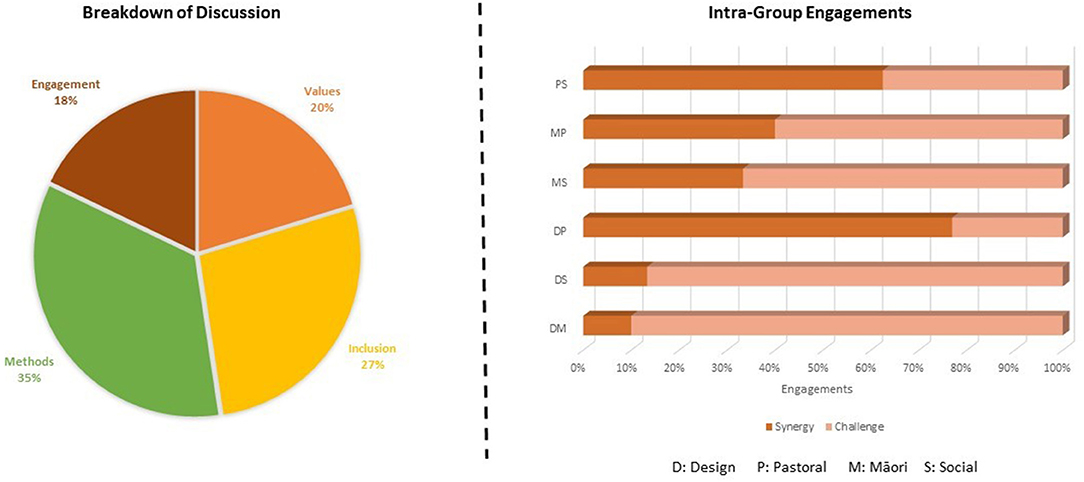
Figure 3. Stage 1 of Co-Design Meetings (The Intra-Group engagements graph only represents coupled engagements such as DM or PS. However, there were many multiple team engagements, such as DMS or SMP. These are currently being analyzed and will be used in future publications).
Important Outcomes
• While it was deemed vital to engage with Māori and regional farmers more intimately during the early design process, relevant stakeholders noted the burden this would represent. Especially given existing engagements between such groups and academic projects. It was decided that the initial co-design process would be decided by a core group of COE members with input from regional stakeholders once the overarching objective of this work was more concrete.
• The team was split into various smaller groups, with theme leaders, decided by disciplinary/epistemic/ideological boundaries. This decision reflected the early aspirations of an expert-driven, tentatively co-produced design which was iteratively transformed through dialogue toward a more plural knowledge framework, foregrounding mātauranga Māori sovereignty.
• While questions of “value” were the most contested and challenging, they were often tabled, given the constraints of time, and the group was corralled by theme leaders toward questions of method and probable outputs.
• The tools of GIS, spatial analysis, and Geo-design emerged as a powerful knowledge production and management tool during these early conversations. This presence of a potential favored tool kit also catalyzed the creation of different groups within the COE team. It was decided during this time, to use the framing of different ontologies, cosmologies or worldviews, and different epistemologies to divide the COE methodology into the constituent, relational, and Te ao Māori analytical pathways. The worldviews described as Relational, Constituent, and Te ao Māori, relate, respectively, to ontological differences between the critical social sciences/humanities, positivist science, and indigenous knowledge. Therefore, the relational worldview is guided by theoretical insights from constructivism, post-humanism, post-materialism, post-modernism (among others), that question the reality of human-nature binaries, while imagining how entangled relationships between different subjects and processes exist at material and more-than-material levels (Whatmore, 2006; Castree, 2015; Rocheleau, 2016). The constituent worldview is rooted in the positivist ontology which often claims (with some caveats) that truth and reality are free and independent of the viewer and observer and can be understood through repetitive experimentation which quantitatively adds up the sum of all the parts. Much of natural and physical science research is embedded in this paradigm which often seems quite oppositional to the relational worldview (Patterson and Williams, 1998; Meissner, 2016; Ely et al., 2020). Finally, the Te ao Māori worldview represents place-based indigenous engagements with various aspects of reality (as mentioned before).
Stage 2 of Co-design
Stage 2 of Co-Design proceeded with an identification of the technical and the manpower capacities of within and across the different teams of the COE, driven by the overarching conversations from stage 1 of Co-Design (Figure 4).
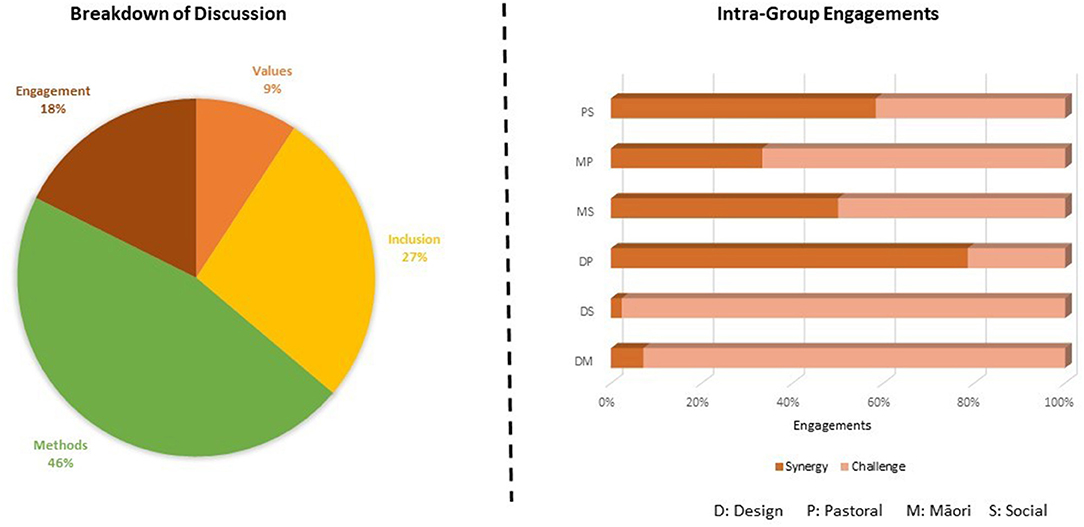
Figure 4. Stage 2 of Co-Design Meetings (The Intra-Group engagements graph only represents coupled engagements such as DM or PS. However, there were many multiple team engagements, such as DMS or SMP. These are currently being analyzed and will be used in future publications).
Important Outcomes
• The second stage of the Co-design process consisted of a lot more conversations around the inclusion of other stakeholders and a move toward exploring knowledge co-production. However, despite this objective, most of the focus remained on finalizing the methodology for the work, without much focus on how the transdisciplinary engagement across different internal teams would be facilitated and managed.
• While there was some discussion about more rooted values, the group seemed to have settled on a set of values which while not without contestation in its entirety, allowed for the project to move ahead.
• As the COVID-19 pandemic was beginning to show up on the group's radar certain decisions were taken regarding the empirical data to be collected from various stakeholders. These decisions pushed the project toward more desk research and moved research funding toward top-down remote sensing products.
• The COE also spent a significant amount of time in this second stage engaging with various institutional stakeholders, many of which were part of the primary production industry. This was driven by a need to secure funding to ensure the sustainability of the COE, but also to create relationships with institutions and actors who could help critique the functional potential of multi-functional landscape redesign projects.
Key Activities Undertaken by Different Teams During the Co-design Process
The Social Team
Despite the significant effects of COVID-19, both on the livelihoods of primary producers in Aotearoa NZ and the constraints it put on more intimate engagement with such stakeholders, the social team did manage to get some information about the aspirations of regional farmers and industry actors. These are presented below.
Farmer Opinions. The COE team conducted semi-structured interviews with 7 people involved in the primary production industry from the South Island. Of the 7 there were five men and 2 women, and 2 were involved more in the industry with the supply chains of primary production and 5 were primary producers who were farming sheep, beef, and dairy.
They were asked questions regarding,
(1) Their current anxieties and aspirations?
(2) Their future anxieties and aspirations?
(3) What did they think about the COE and the work being attempted there?
(4) Would they want to be a part of such work? Why or Why not?
(5) Did they have any advice for us?
The anxieties and aspirations of the primary producers echo recent research into rurality and livelihoods in Aotearoa NZ (Figure 5) (Lewis et al., 2013; Rosin et al., 2017).
Their answers to work being done at COE and potential avenues for collaboration were heavily concentrated on incentives and the lack of capacity to engage. All 7 agreed that there needed to be more collaborative work across science-society, especially through initiatives that did not position the knowledge of the scientists as more important than the knowledge of the farmers.
The Te ao Māori Team
Māori Cultural Mapping. The team working on Māori cultural mapping decided on three objectives to pursue through their work with the COE.
• To use Māori cultural mapping as a tool to re-imagine and re-design the landscape. To aid in this process they reached out to Kā Huru Manu, The Ngāi Tahu Cultural Mapping Project (https://www.kahurumanu.co.nz/) to procure existing cultural landscape visualizations, which would form the foundation of their mapping activities.
• To use the Mauriora Systems Framework (MSF) (Figure 6) both as a processual tool to ensure Māori knowledge sovereignty and as a conceptual tool to understand the present state of the mauri and how to ensure its well-being in the future under various landscape management scenarios.
• To accept that there is incredible demand on Māori whanau, iwi, and hapu to participate in decision making and knowledge production on such projects. Keeping this in mind, the formal opinions and time of the kaitiaki would be requested judiciously and the Māori team leader would informally engage with them regularly to inform them of the team's ongoing work and ask them for feedback.
The Design Team
Participatory Objective and Goal Setting. The COE during Stage 2 of the Co-design also facilitated multiple workshops to engage different stakeholders in the process of critiquing and suggesting landscape management objectives for the re-design project. These opinions were focused on the pastoral production and ecological health aspects of the landscape.
We used a participatory weighting technique, inspired by participatory action research (Farr, 2018; Johansson and Abdi, 2020) which quantified stakeholder aspirations by gauging both their self-described prowess about a topic and the collective expertise of the group. The results are shown in Figure 7.
Water quality, agroforestry, and pest management were identified as the three issues that were not being addressed by current practice which needed significant focus in any future re-design attempts. Interestingly while pasture-based production systems were being addressed in the current scenario the need to ensure their well-being in future landscape design was quite robust.
The Pastoral Production and Landscape Health
Farm Scale Spatial Mapping. The team identified existing farm-scale data from the national land use and land cover database which is used in conjunction with LIDAR data produced by data analytics company and field data gathered on-site at the farm to create capability and suitability maps using ArcGIS software (Figure 8).
Overview of Co-design
• Co-design at the COE was a contentious and dynamic process with processual objectives changing based on discussions and engagement within the group. The salient features of the co-production process mentioned in Figure 1 did not emerge linearly at the beginning but instead were developed throughout the co-design process.
• The COE group spent the most amount of time discussing methods, while values and engagement were the least discussed (Figures 3, 4).
• The most synergy was seen between the design team and the pastoral team, while the most challenging exchanges happened between the design team and the te ao Māori and the social teams (Figures 3, 4).
• While the opinions of stakeholders from the primary production industry are quite insightful their engagement with the overall co-design process was quite minimal (Figures 5, 7).
Knowledge Products From the Co-production Process
Knowledge co-production at the COE took the main stage starting in March 2020 and that process is ongoing. The co-production through the various teams and the COE given the capacity (technological and labor), skill sets, funding timelines, institutional mandates, and long/short term goals led to a culture of co-production which is visualized in Figure 9.
From the figure above it can be surmised that the process of co-production echoes the synergies and challenges that emerged during the co-design process and contain both “strong” moments of co-production (MD, SD, MS) and “weak” moments of co-production (M, S, D). The most advanced knowledge products are the ones associated with Māori and Pastoral and Design. In the next few paragraphs, we summarize some of this work to present some tangible outcomes of the knowledge co-production process.
D: Farm Scale Master Planning
The farm-scale master planning was done using existing land use and land cover data, farm management plans of MT. Grand, site visits for ecological and hydrological mapping, remotely sensed products, and stakeholder insights that emerged from co-design workshops and participatory review of design goals and themes. It also considered the existing capability and suitability of the landscape's production management and incorporated some of the insights from regional primary producers and industry actors. A tentative draft master plan is shown in Figure 10.
The plan as it currently stands focuses on regenerative silvopastoralism, soil resilience, hydrological management, and the creation of a carbon positive landscape. This plan is a result of collaborative efforts within the design and pastoral teams with complementary inputs from the social and Māori teams.
The tools highlighted in this knowledge product are GIS-based spatial analysis, landscape ecology design principles, and farm management planning and the scale of focus is the farm. In detail, the process entailed,
• Multi-objective ecological and production-related aspirations for the farm were obtained from managers and scientists. These included the capability of the land to support healthy pasture, soil management, and soil management, enriching riparian buffers, changing rabbit habitats, and improving biodiversity through Silvo-pastoral systems.
• Remote sensed data products, existing land cover maps, farm management plans, and regional zoning maps were brought together to situate the farm within a certain spatial context and to identify areas of special vulnerability.
• Paddock scale SWOT analysis of the complete station done by the various experts that are part of the center. This analysis took into consideration the disaggregated objectives of each major theme.
• A designer compiled all this information onto a visual platform.
M: Regional Scale Cultural Maps
Māori have been spatially articulating their relationship with all the islands that form Aotearoa NZ ever since they arrived (Hakopa, 2019). However, European colonization through its many violent manifestations has led to significant erasure of both place-based and more mobile renditions of Māori landscapes (Pawson and Brooking, 2013). The maps being produced by the Māori team at the COE attempt to challenge this cartographic reality, but to also provide a more holistic visualization of human-land relationships which contain material (lakes, trees, houses) as well as non-material elements (stories, spirits, emotions).
An example of a map made by the team is given in Figure 11.
This map spatializes the cultural history of the landscapes within which Mt. Grand is situated and is intentionally on a regional scale to include the vital stories of how the landscape features we see in that region came to be.
Rākaihautu's story of digging the lakes of the South Island with his magical ko (digging stick) and filling them with food, including lake Wānaka which is next to Mt. Grand, is presented in this rendition. Along with that are stories about Aoraki (Aotearoa NZ's highest mountain) and his brothers as well as the cultural history of the Mata-Au River. Finally, as katiaki of the regional district state,
“Our associations are much broader than discrete sites. An archaeological site will contain items, but we are talking about is the korero (conversation and dialogue) which goes with a place and that blankets a place like a korowai (cloak), overlays it, which does not have very strong boundaries”
The goal with this map is to move the COE's focus out of the farm-scale and current and future thinking, into the regional cultural landscape and the past. Additionally, it is to present a landscape version that questions the different “boundaries” that are used in current landscape planning to characterize things like urban zoning, conservation habitats, sustainable food gathering sites, watersheds, and primary production zones. Finally, it also complements and supplements current notions of relationships between various landscape forms such as rivers, mountains, farms, and cities.
The tools highlighted in this effort are indigenous cartography, visual storytelling, emotional and affective landscapes, and participatory mapping. In detail, the process entailed,
• Engaging with The Ngāi Tahu Cultural Mapping Project (https://www.kahurumanu.co.nz/) to get permission to use their cultural maps.
• Identifying vital points/processes of importance from various maps prepared by iwi, councils, and Papatipu Runangas. These maps also go back in time to highlight some of the historical changes in ownership and management.
• Co-design meetings about which stories to use, their significance for the landscape, and their role in exploring social-ecological well-being for the future.
• A Māori designer looked over the identified stories, existing landscape forms, and statements from the regional iwi, councils, and Papatipu Runangas and created the map.
MD: Regional Scale SES Mapping
Co-production of maps that attempt engagement across the constituent and Māori knowledge systems has been a very contentious and productive undertaking at the COE. During the co-design phase, there were significant challenges between the Māori team and the landscape design team, especially regarding the spatialization (and visualization) of immaterial objects, beings, and processes and the scalar biases of attempting landscape design from the perspective of existing land ownership and zoning laws. Despite significant divergences in the values, objectives, and goals of the project, the Māori and design team managed to collaborate on producing a few visualizations which attempt to include plural goals and tools.
A couple of examples are shown in Figure 12. The two maps were produced in collaboration with a Māori designer and a spatial analyst using data from historical narratives of Māori movement across the landscape and over time change in ownership of land in the south island from the Whenua Māori Visualization Tool developed by Te Puni Kokiri Ministry of Māori Development and Manaaki Whenua Landcare Research (https://whenuaviz.landcareresearch.co.nz/).
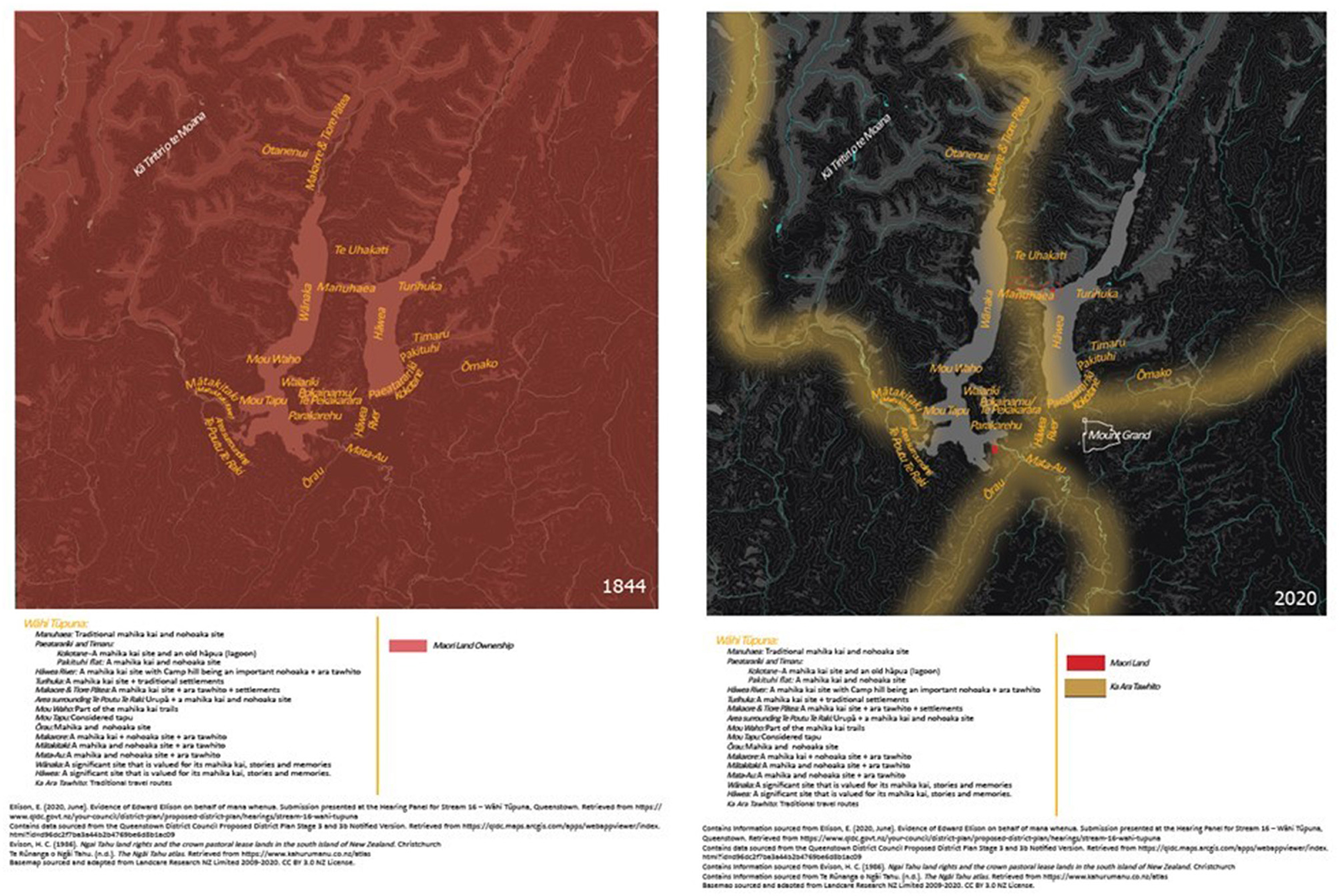
Figure 12. Co-produced maps showing the transformation in land ownership in the Otago region of Te Waipounamu South Island in Aotearoa NZ. Also depicted on the map are Wahi Tupuna (sacred/ancestral places) which include Mahinga Kai (food gathering site) and Ka Ara Tawhito (seasonal migration routes).
The Ka Ara Tawhito (seasonal migration routes highlighted in yellow) shown in (Figure 12) crisscross a vast landscape from the mountains to the ocean and reveal the vast and dynamic territorial presence of the Māori. In doing so they challenge colonial notions of land use rooted that remain overwhelmingly rooted in more sedentary notions of communal infrastructure. Simultaneously they visualize, throughout more than 170 years, the changing control over the land, from Māori to the settler colony.
Visualizing these Wahi tupunas allows a different landscape to emerge and facilitates the process of cultural and political inclusion and ultimately, plurality. Concepts such as deed validated land ownership, productivist management, and intensive livestocking are challenged in this visualization. Additionally, due to protocols and procedures enshrined in the Treaty of Waitangi (Ataria et al., 2018), such revelations necessitate all landscape management programs to be co-developed in consultation with Māori stakeholders. Therefore, even though the current MT. Grand management plans fail to account for the significance of the migration routes, our visualization makes the case that it should. Additionally, they can also be used as “boundaries” for demarcating land, paralleling existing land demarcations that remain rooted in the notion of property ownership and sustainability equilibriums between production and conservation.
Discussion
In their review of co-production practice, Jagannathan et al. (2020) note that co-production practice is often hindered and fails to address the objectives of co-production theory due to existing power differences and the bounding of co-production projects by institutional and funding realities. The work done at the COE echoes this insight, especially when viewed from the perspective of more radical, long-term transformations in social-ecological relationships. Keeping this in mind, we return to the questions we began with and explore the major synergies and challenges that emerged during knowledge co-production. We argue that the COE's experiments with co-production reveal four important points.
First, designing, managing, and sustaining co-production should be pursued with a significant focus on the co-definition of values and objectives and require mitigation procedures in place to explore how different values can coexist within the co-design space. Our initial forays toward co-design were quite contentious with significant challenges when it came to defining how knowledge should be produced, who should it serve, and what the group should aspire for. The COE did not have the resources in place to mitigate these cleavages, and many contentious exchanges, especially those that were problematic from a Māori perspective were tabled at an impasse. This was especially problematic for the indigenous stakeholders who were burdened with not just continuously exposing their historical trauma but were also kept from forging truly innovative concepts in collaboration with the more mainstream views of sustainability. This is reflected in significant challenges that were recorded between the Māori and Design teams, but also in the fact that in stage 1 of Co-design the COE team as a whole did not spend enough time discussing the more essential “values” underpinning our work or exploring tools and techniques for “engagement” across the different disciplinary and ideological silos. Instead, as has been recorded in other co-production attempts, much of the conversation, even in the initial stages was around the appropriate methodology (Parsons et al., 2016; Sutherland et al., 2017; Turnhout et al., 2020).
Second, it is important to understand that co-production with multiple stakeholders should be aware of what that represents for different groups given both their current capacities and historical inclusion (or exclusion) within the process of knowledge production. Therefore, one of the moments of synergy in the COE was the acceptance that IPLC stakeholders had been part of multiple projects in the past and were also currently burdened by invitations from other such initiatives. This led the COE team to decide that the inclusion of multiple stakeholders would have to be contextual, especially when the institutional timeframes for the university and those of IPLC actors were very different. So, while the COE team embraced, what can be termed, “weak” co-production, limiting the inclusion of IPLC to a few key actors during the co-design phase, they were responding to IPLC stakeholders who expressed that they wanted a more “concrete” idea of what the COE was proposing before investing their time and energy. We believe, pursuing such active representation, can address the problem with tokenism which co-production has struggled with (Reid and Rout, 2018; Zurba et al., 2021).
Third, COE remains more focussed on methods that lead to tangible knowledge products and less on evaluating such products for the realization of plurality, accountability, and engagement. As mentioned in Figure 2 the salient features driving our work at the COE foreground these elements. However, finding synergistic evaluation tools for the work done by various teams has been quite problematic, especially since the assessment of the products must be inclusive. While scholars do mention certain pathways for addressing the evaluation problem, converting theory to practice has been marred by challenges to the viability of different metrics (Polk, 2015; Norström et al., 2020). For example, assessing the co-produced regional scale map led to questions about whether Māori stakeholders wanted a plurality of concepts and aspirations to define their visualization of the land, or whether they wanted their goals of sovereignty to be the final value being measured. This also raises a point made by Wyborn et al. (2019) that co-production does not always lead to “better outcomes.” However, in the case of the COE, due to the lack of assessment tools, we find it hard to agree or disagree with this proposition.
Finally, both synergies and challenges proved to be equally meaningful when pursuing co-production. The discussions that took place during the co-design meetings were incredibly useful in presenting very clearly the disciplinary silos and the different understandings of knowledge production that existed on campus. As many scholars have pointed out that there is a greater need to engage with the politics of knowledge production, and the discussion meetings, the participatory design theme setting, and the process of map-making brought this to the forefront. While the team at COE is still working on finding places of engagement across the different intra-group teams that were formed, there is a clarity in the objectives and values of different actors which did not exist at the beginning of the process.
We think the work done at the COE echoes two ongoing, unresolved problems in knowledge co-production.
First is the mismatch between more radical and socio-ecologically transformative ideological goals and the more pragmatic, functionally useful outcomes from the practice (Tengö et al., 2017; Jagannathan et al., 2020). We think this cleavage is sustained by the very different funding and institutional realities of academic, project-oriented knowledge production and the complicated, historical problems that require long-term, multi-spatial solutions. A great example is the differences between the farm-scale maps and the regional cultural maps. The farm-scale maps address the needs of a land focussed institution of higher learning that the COE is based on to provide innovative land management ideas which also respond to the insecurities of regional farmers. However, the cultural maps being produced by the COE address the latent issues of power within a settler-colonial society and how they manifest onto the land across a long period. Therefore, currently, the landscape is divided into multiple parcels, each of which depending on their ownership and use, are held accountable to different sets of ecological and social compliance, but this system of relating to the land deviates considerably from pre-colonial Māori visions of stewardship and ownership. Lacking this time dimension, managing land ends up constrained by the myopic vision of a certain administrative reality and it can be argued, a very specific human/nature relationship. The maps highlight a process of place-making that challenges current visions of ownership, control, and democracy, which remain tied to specific visions of personal property and renditions of history that fail to capture Māori land use. The land dispossession caused by colonial capture of Aotearoa NZ is an unresolved issue, whose ongoing impacts are well-documented (McIntyre, 2007; Forster, 2016; Ojong, 2020). Thus, while our work through cultural mapping attempts to reveal the limitations of juridically ordained indigenous land rights in facilitating land and agro-pastoral management that is healthy and equitable, responding to a longer more transformative goal, our farm-scale map addresses the needs of the university to experiment with innovation which also respects the anxieties of regional farmers.
Second, building off the earlier point there is a lack of multi-scalar and multi-temporal knowledge production for multi-functional landscapes (Stürck and Verburg, 2017). While there is a bewildering diversity of knowledge available to land managers and policymakers (Maharjan et al., 2019; Paltsyn et al., 2019; Chaudhary et al., 2020). Presenting such knowledge in formats that appeal to a variety of stakeholders is critical to ensure both the sophistication and the democratic potential of land management. Additionally, the tools of exploration (satellites, field workers, farm system outputs), due to their scalar biases, are talking past each other rather than with each other. Ultimately, contingencies of capital, manpower, and time often limit research programs and policymakers to extrapolate their findings onto the relevant land unit. Our work addresses such issues by (1) holding different scales (farm, person, region, etc.) as non-constitutive, that is, the seemingly larger units are more than the sum of the smaller ones (2) by attempting to work on projects across as many unique scalar units as possible (3) By including time as a key component of scale, especially when co-producing knowledge with indigenous stakeholders.
Ultimately, the experiments with co-production at the COE while seemingly time-consuming (30 months) have begun to delve into the critical aspects of engagement—ensuring the disciplinary marriage we have been searching for, and inclusion—which given our current more tangible objectives would incentivize IPLC to come to the discussion table. And, this is when we need to focus on sustaining the co-production through building on the non-exploitative and non-extractive relationships that we have worked hard to establish between the various stakeholders.
Conclusions and the Way Ahead
At the COE, with the goal of re-designing a farm to function as a multi-functional landscape, we attempted a process of knowledge co-production to ensure equitable representation of different stakeholders in a certain region of Aotearoa NZ. This process was documented through ethnographic participatory observations of meetings and workshops and materialized through knowledge products that emerged from this collaboration. We did thematic and qualitative coding of these exchanges and explored whether the actual process of knowledge production addressed the salient features guiding the work. While our work led to some vital insights into co-production, especially in regards to co-designing for plurality and inclusion, which led to land visualizations at different scales and temporalities, significant work remains to be done to address both IPLC inclusion throughout the process and to create assessment frameworks that can adequately evaluate such co-production. We draw the following three lessons from our work.
First, the COE, and similar initiatives at knowledge co-production, while pursuing stakeholder inclusion need to facilitate more opportunities for various segments of the IPLC population to engage with the project. While in the past the COE was advised by representative stakeholders to hold off on such contact before constructing a more concrete set of objectives and some tangible examples, we are currently ready to collaborate and need to pursue this in the future.
Second, while the COE has been successful in creating some collaborative knowledge products, we have important shortcomings when it comes to evaluation metrics. Our future work needs to focus on experimenting with different assessment frameworks and we have already started engaging with existing options. This is especially important given the diversity of indicators and variables in multi-stakeholder, multi-functional landscapes, and is a significant data gap
Third, the mismatch between both scales of knowledge production as well as its ideological goals can be a significant roadblock to achieving successful co-production. Such mismatches can be addressed through long-term trust-building with IPLC communities, conducting multiple projects exploring similar objectives at different scales, and finally, pursuing research that has utility for IPLC aspirations that go beyond mere knowledge production.
We conclude with a call for more studies that assess the process of knowledge co-production especially with IPLC focussing on highly contentious topics such as land management and re-design, which foreground issues that stem from disciplinary bias, colonial erasure, and the marginalization of non-expert opinions. While it can be a very difficult task addressing questions of values, objectives, and inclusion, especially when there are glaring power inequalities across stakeholders, it can foster a culture of constantly reflecting on whether power is shared and how the practice of co-production needs to be actively gauged against the aspirations of co-production. As institutions and governments around the world mobilize to address the various crises stemming from land use, climate change, and unequal resource distribution, the care of landscapes has become a critical issue. Planning this care requires a direct engagement with the historical relationships between the various stakeholders and understanding how that manifests into producing knowledge to sustain such plans. Exploring this knowledge production and evaluating its viability through a prism of diversity and utility will be essential in ensuring its success and can create truly inclusive multifunctional landscapes. We suggest that knowledge co-production attempts in multi-stakeholder landscape design and management should attempt similar assessments of their process to ensure the relevance of the research to the various stakeholders.
Data Availability Statement
The raw data supporting the conclusions of this article will be made available by the authors, without undue reservation.
Ethics Statement
The studies involving human participants were reviewed and approved by Lincoln University Human Ethics Committee. The patients/participants provided their written informed consent to participate in this study.
Author Contributions
RC did all the writing, human subject field work, and analysis of the knowledge co-production data. SJ produced the farm scale maps. HM and LM produced the Maori cultural maps. JE, SD, and PG provided editorial support. All authors contributed to the article and approved the submitted version.
Funding
This research did not receive any external funding and was developed in the Centre for Excellence for Designing Future Productive Landscapes at Lincoln University.
Conflict of Interest
The authors declare that the research was conducted in the absence of any commercial or financial relationships that could be construed as a potential conflict of interest.
Publisher's Note
All claims expressed in this article are solely those of the authors and do not necessarily represent those of their affiliated organizations, or those of the publisher, the editors and the reviewers. Any product that may be evaluated in this article, or claim that may be made by its manufacturer, is not guaranteed or endorsed by the publisher.
References
Abbott, M., and Boyle, C. (2019). Ecological homelands: towards a counter-ontopology of landscape design. Landscape Res. 45, 137–151. doi: 10.1080/01426397.2019.1611750
Ataria, J., Mark-Shadbolt, M., Mead, A. T. P., Prime, K., Doherty, J., Waiwai, J., et al. (2018). Whakamanahia Te mātauranga o te Māori: empowering Māori knowledge to support Aotearoa's aquatic biological heritage. N. Z. J. Mar. Freshw. Res. 52, 467–486. doi: 10.1080/00288330.2018.1517097
Bezner Kerr, R., Nyantakyi-Frimpong, H., Dakishoni, L., Lupafya, E., Shumba, L., Luginaah, I., et al. (2018). Knowledge politics in participatory climate change adaptation research on agroecology in Malawi. Renew. Agric. Food Syst. 33, 238–251. doi: 10.1017/S1742170518000017
Bishop, R. (1999). “Kaupapa Māori research: an indigenous approach to creating knowledge,” in Māori and Psychology: Research and Practice (Hamilton).
Bornemann, B., and Christen, M. (2020). Navigating between complexity and control in transdisciplinary problem framing. Meaning making as an approach to reflexive integration. Soc. Epistemol. 34, 357–369. doi: 10.1080/02691728.2019.1706120
Broughton, D., and McBreen, K. (2015). Matauranga Maori, tino rangatiratanga and the future of New Zealand science. J. R. Soc. N. Z. 45, 83–88. doi: 10.1080/03036758.2015.1011171
Cairol, D., Coudel, E., Knickel, K., Caron, P., and Kröger, M. (2009). Multifunctionality of agriculture and rural areas as reflected in policies: the importance and relevance of the territorial view. J. Environ. Policy Plann. 11, 269–289. doi: 10.1080/15239080903033846
Castree, N. (2015). Coproducing global change research and geography {The} means and ends of engagement. Dialog. Hum. Geogr. 5, 343–348. doi: 10.1177/2043820615613265
Chaudhary, S., Wang, Y., Dixit, A. M., Khanal, N. R., Xu, P., Fu, B., et al. (2020). Spatiotemporal degradation of abandoned farmland and associated eco-environmental risks in the high mountains of the Nepalese Himalayas. Land 9, 1–19. doi: 10.3390/land9010001
Cockburn, J., Cundill, G., Shackleton, S., and Rouget, M. (2018). Towards place-based research to support social-ecological stewardship. Sustainability 10:1434. doi: 10.3390/su10051434
Cockburn, J., Cundill, G., Shackleton, S., Rouget, M., Zwinkels, M., Cornelius, S. A., et al. (2019). Collaborative stewardship in multifunctional landscapes: toward relational, pluralistic approaches. Ecol. Soc. 24:32. doi: 10.5751/ES-11085-240432
Cornell, S., Berkhout, F., Tuinstra, W., Tàbara, J. D., Jäger, J., Chabay, I., et al. (2013). Opening up knowledge systems for better responses to global environmental change. Environ. Sci. Policy 28, 60–70. doi: 10.1016/j.envsci.2012.11.008
Dominy, M. D. (1990). New Zealand's Waitangi tribunal: cultural politics of an anthropology of the high country. Anthropol. Tdy 6:11. doi: 10.2307/3033004
Duncan, J. M. A., Haworth, B., Boruff, B., Wales, N., Biggs, E. M., and Bruce, E. (2020). Managing multifunctional landscapes: local insights from a Pacific Island Country context. J. Environ. Manage. 260:109692. doi: 10.1016/j.jenvman.2019.109692
Ely, A., Marin, A., Charli-Joseph, L., Abrol, D., Apgar, M., Atela, J., et al. (2020). Structured collaboration across a transformative knowledge network-learning across disciplines, cultures and contexts? Sustainability 12:2499. doi: 10.3390/su12062499
Fagerholm, N., Martín-López, B., Torralba, M., Oteros-Rozas, E., Lechner, A. M., Bieling, C., et al. (2020). Perceived contributions of multifunctional landscapes to human well-being: evidence from 13 European sites. People Nat. 2, 217–234. doi: 10.1002/pan3.10067
Farr, M. (2018). Power dynamics and collaborative mechanisms in co-production and co-design processes. Crit. Soc. Policy 38, 623–644. doi: 10.1177/0261018317747444
Fazey, I., Schäpke, N., Caniglia, G., Hodgson, A., Kendrick, I., Lyon, C., et al. (2020). Transforming knowledge systems for life on Earth: visions of future systems and how to get there. Energy Res. Soc. Sci. 70:101724. doi: 10.1016/j.erss.2020.101724
Ford, J. D., Cameron, L., Rubis, J., Maillet, M., Nakashima, D., Willox, A. C., et al. (2016). Including indigenous knowledge and experience in IPCC assessment reports. Nat. Clim. Change 6, 349–353. doi: 10.1038/nclimate2954
Forster, M. (2016). Indigenous environmental autonomy in aotearoa New Zealand. Alternative 12, 316–330. doi: 10.20507/AlterNative.2016.12.3.8
Fritz, L., and Meinherz, F. (2020). Tracing power in transdisciplinary sustainability research: an exploration. GAIA Ecol. Perspect. Sci. Soc. 29, 41–51. doi: 10.14512/gaia.29.1.9
Fry, G. L. A. (2001). Multifunctional landscapes - Towards transdisciplinary research. Landscape Urban Plan. 57, 159–168. doi: 10.1016/S0169-2046(01)00201-8
Galvin, K. A., Reid, R. S., Fernández-Giménez, M. E., Kaelo, D., Baival, B., and Krebs, M. (2016). Co-design of transformative research for rangeland sustainability. Curr. Opin. Environ. Sustain. 20, 8–14. doi: 10.1016/j.cosust.2016.03.003
Garner, G. O. (2017). Forestry treaty claims in Aotearoa-New Zealand: bicultural significance and socio-economic impact. Pacific Rim Property Res. J. 23, 35–49. doi: 10.1080/14445921.2017.1299442
Gorman, J., Pearson, D., and Wurm, P. (2020). Old ways, new ways-scaling up from customary use of plant products to commercial harvest taking a multifunctional, landscape approach. Land 9:171. doi: 10.3390/land9050171
Grove, M. J., Chowdhury, R. R., and Childers, D. (2015). Co-design, Co-production, and Dissemination of Social-Ecological Knowledge to Promote Sustainability and Resilience: Urban Experiences from the U.S. Long Term Ecological Research (LTER) Network. Global Land Projection News. Retrieved from: https://www.fs.fed.us/nrs/pubs/jrnl/2015/nrs_2015_grove_001.pdf
Guzmán Ruiz, A., Dobbie, M., and Brown, R. R. (2017). Toward multifunctional landscapes in Australian cities: what disciplinary dynamics and practitioner strategies inform transdisciplinary practice? Urban Forest. Urban Green. 27, 15–23. doi: 10.1016/j.ufug.2017.06.015
Hakopa, H. (2019). The Sacred Geographies of Belonging (Doctoral Thesis). Whakatane, NZ: Te Wānanga o Awanuiārangi.
Harmsworth, G., Awatere, S., and Robb, M. (2016). Indigenous Māori values and perspectives to inform freshwater management in aotearoa-New Zealand. Ecol. Soc. 21:9. doi: 10.5751/ES-08804-210409
Hill, R., Walsh, F. J., Davies, J., Sparrow, A., Mooney, M., Wise, R. M., et al. (2020). Knowledge co-production for Indigenous adaptation pathways: transform post-colonial articulation complexes to empower local decision-making. Glob. Environ. Change 65:102161. doi: 10.1016/j.gloenvcha.2020.102161
Jackson, R., Shiferaw, A., Taye, B. M., and Woldemariam, Z. (2021). Landscape multifunctionality in (and around) the Kafa Biosphere Reserve: a sociocultural and gender perspective. Landscape Res. 46, 50–63. doi: 10.1080/01426397.2020.1831460
Jagannathan, K., Arnott, J. C., Wyborn, C., Klenk, N., Mach, K. J., Moss, R. H., et al. (2020). Great expectations? Reconciling the aspiration, outcome, and possibility of co-production. Curr. Opin. Environ. Sustain. 42, 22–29. doi: 10.1016/j.cosust.2019.11.010
Johansson, E. L., and Abdi, A. M. (2020). Mapping and quantifying perceptions of environmental change in Kilombero Valley, Tanzania. Ambio 49, 557–568. doi: 10.1007/s13280-019-01226-6
Kansanga, M. M., and Luginaah, I. (2019). Agrarian livelihoods under siege: carbon forestry, tenure constraints and the rise of capitalist forest enclosures in Ghana. World Dev. 113, 131–142. doi: 10.1016/j.worlddev.2018.09.002
Kitson, J. C., Cain, A. M., Johnstone, M. N. T. H., Anglem, R., Davis, J., Grey, M., et al. (2018). Murihiku Cultural Water Classification System: enduring partnerships between people, disciplines and knowledge systems. N. Z. J. Mar. Freshw. Res. 52, 511–525. doi: 10.1080/00288330.2018.1506485
Knickel, K., Kröger, M., Bruckmeier, K., and Engwall, Y. (2009). The challenge of evaluating policies for promoting the multifunctionality of agriculture: when “good” questions cannot be addressed quantitatively and “quantitative answers are not that good.” J. Environ. Policy Plan. 11, 347–367. doi: 10.1080/15239080903033945
Knickel, K., Redman, M., Darnhofer, I., Ashkenazy, A., Calvão Chebach, T., Šumane, S., et al. (2018). Between aspirations and reality: making farming, food systems and rural areas more resilient, sustainable and equitable. J. Rural Stud. 59, 197–210. doi: 10.1016/j.jrurstud.2017.04.012
Lauter, O. (2020). Challenges in Combining Indigenous and Scientific Knowledge in the Arctic. doi: 10.31235/osf.io/kvn2c
Lemos, M. C., Arnott, J. C., Ardoin, N. M., Baja, K., Bednarek, A. T., Dewulf, A., et al. (2018). To co-produce or not to co-produce. Nat. Sustain. 1, 722–724. doi: 10.1038/s41893-018-0191-0
Leonie, P., Fiona, C., and Sheila, W. (2002). Creating methodological space: a literature review of Kaupapa Maori research. Can. J. Native Educ. 26:30. Available online at: https://www.researchgate.net/profile/Fiona-Cram/publication/234647374_Creating_Methodological_Space_A_Literature_Review_of_Kaupapa_Maori_Research/links/5c354a6692851c22a366072d/Creating-Methodological-Space-A-Literature-Review-of-Kaupapa-Maori-Research.pdf
Lewis, N., Le Heron, R., Campbell, H., Henry, M., Le Heron, E., Pawson, E., et al. (2013). Assembling biological economies: region-shaping initiatives in making and retaining value. N. Z. Geogr. 69, 180–196. doi: 10.1111/nzg.12031
Lilley, S. (2018). Interdisciplinarity and indigenous studies: a Māori perspective. J. Austral. Library Inform. Assoc. 67, 246–255. doi: 10.1080/24750158.2018.1497348
Maharjan, S., Qamer, F. M., Matin, M., Joshi, G., and Bhuchar, S. (2019). Integrating modelling and expert knowledge for evaluating current and future scenario of large cardamom crop in eastern Nepal. Agronomy 9:481. doi: 10.3390/agronomy9090481
Marks, G. (2015). Rourou Maori methodological approach to research. Mai 4, 60–70. Available online at: http://www.journal.mai.ac.nz/sites/default/files/MAIJrnl_V4Iss1_Mark.pdf
Marques, B., Grabasch, G., and McIntosh, J. (2021). Fostering landscape identity through participatory design with indigenous cultures of Australia and Aotearoa/New Zealand. Space Cult. 24, 37–52. doi: 10.1177/1206331218783939
Marques, B., McIntosh, J., and Hatton, W. (2018). Haumanu ipukarea, ki uta ki tai: (re)connecting to landscape and reviving the sense of belonging for health and wellbeing. Cities Health 2, 82–90. doi: 10.1080/23748834.2018.1514754
Matuk, F. A., Turnhout, E., Fleskens, L., do Amaral, E. F., Haverroth, M., and Behagel, J. H. (2020). Allying knowledge integration and co-production for knowledge legitimacy and usability: the Amazonian SISA policy and the Kaxinawá Indigenous people case. Environmental Sci. Policy 112, 1–9. doi: 10.1016/j.envsci.2020.04.018
Matunga, H., Matunga, H., and Urlich, S. (2020). Tino rangatiratanga and tourism in aotearoa New Zealand. MAI J. 9, 295–308. doi: 10.20507/MAIJournal.2020.9.3.10
Mazzocchi, F. (2018). Under what conditions may western science and indigenous knowledge be jointly used and what does this really entail? Insights from a western perspectivist stance. Soc. Epistemol. 32, 325–337. doi: 10.1080/02691728.2018.1527412
McIntyre, R. (2007). Historic Heritage of High-Country Pastoralism: South Island up to 1948. Department of Conservation, Wellington.
Meissner, R. (2016). The relevance of social theory in the practice of environmental management. Sci. Eng. Ethics 22, 1345–1360. doi: 10.1007/s11948-015-9700-y
Miller, C. A., and Wyborn, C. (2020). Co-production in global sustainability: histories and theories. Environ. Sci. Policy 113, 88–95. doi: 10.1016/j.envsci.2018.01.016
Morgan, E. R., Perry, N. B., and Chagné, D. (2019). Science at the intersection of cultures-Māori, Pākehā and Mānuka. N. Z. J. Crop Hortic. Sci. 47, 225–232. doi: 10.1080/01140671.2019.1691610
Muccione, V., Huggel, C., Bresch, D. N., Jurt, C., Wallimann-Helmer, I., Mehra, M. K., et al. (2019). Joint knowledge production in climate change adaptation networks. Curr. Opin. Environ. Sustain. 39, 147–152. doi: 10.1016/j.cosust.2019.09.011
Norström, A. V., Cvitanovic, C., Löf, M. F., West, S., Wyborn, C., Balvanera, P., et al. (2020). Principles for knowledge co-production in sustainability research. Nat. Sustain. 3, 182–190. doi: 10.1038/s41893-019-0448-2
Nowell, L. S., Norris, J. M., White, D. E., and Moules, N. J. (2017). Thematic analysis: striving to meet the trustworthiness criteria. Int. J. Qual. Methods 16, 1–13. doi: 10.1177/1609406917733847
O'Farrell, P. J., and Anderson, P. M. L. (2010). Sustainable multifunctional landscapes: a review to implementation. Curr. Opin. Environ. Sustain. 2, 59–65. doi: 10.1016/j.cosust.2010.02.005
Ojong, N. (2020). Indigenous land rights: where are we today and where should the research go in the future? Settler Colon. Stud. 10, 193–215. doi: 10.1080/2201473X.2020.1726149
Paltsyn, M. Y., Gibbs, J. P., and Mountrakis, G. (2019). Integrating traditional ecological knowledge and remote sensing for monitoring rangeland dynamics in the Altai mountain region. Environ. Manage. 64, 40–51. doi: 10.1007/s00267-018-01135-6
Parsons, M., Fisher, K., and Nalau, J. (2016). Alternative approaches to co-design: insights from indigenous/academic research collaborations. Curr. Opin. Environ. Sustain. 20, 99–105. doi: 10.1016/j.cosust.2016.07.001
Patterson, M. E., and Williams, D. R. (1998). Paradigms and problems: the practice of social science in natural resource management. Soc. Nat. Resour. 11, 279–295. doi: 10.1080/08941929809381080
Pawson, E., and Brooking, T. (2013). Making a New Land : Environmental Histories of New Zealand. Dunedin: Otago University Press.
Pearson, D. (2020). Key roles for landscape ecology in transformative agriculture using Aotearoa-New Zealand as a case example. Land 9, 146. doi: 10.3390/land9050146
Persson, J., Johansson, E. L., and Olsson, L. (2018). Harnessing local knowledge for scientific knowledge production: challenges and pitfalls within evidence-based sustainability studies. Ecol. Soc. 23:38. doi: 10.5751/ES-10608-230438
Pinto-Correia, T., Muñoz-Rojas, J., Thorsøe, M. H., and Noe, E. B. (2019). Governance discourses reflecting tensions in a multifunctional land use system in decay; tradition versus modernity in the portuguese montado. Sustainability 11, 3363. doi: 10.3390/su11123363
Polk, M. (2015). Transdisciplinary co-production: designing and testing a transdisciplinary research framework for societal problem solving. Futures 65, 110–122. doi: 10.1016/j.futures.2014.11.001
Reid, J., and Rout, M. (2018). Can sustainability auditing be indigenized? Agric. Hum. Values 35, 283–294. doi: 10.1007/s10460-017-9821-9
Reiter, B. (2018). Constructing the Pluriverse: The Geopolitics of Knowledge. Durham: Duke University Press. doi: 10.1215/9781478002017
Rocheleau, D. (2016). Rooted networks, webs of relation, and the power of situated science: bringing the models back down to earth in Zambrana. Palgrave Handb. Gender Dev. 213–231. doi: 10.1007/978-1-137-38273-3_15
Rosin, C. J., Legun, K. A., Campbell, H., and Sautier, M. (2017). From compliance to co-production: emergent forms of agency in Sustainable Wine Production in New Zealand. Environ. Plan. A 49, 2780–2799. doi: 10.1177/0308518X17733747
Schröter, M., Başak, E., Christie, M., Church, A., Keune, H., Osipova, E., et al. (2020). Indicators for relational values of nature's contributions to good quality of life: the IPBES approach for Europe and Central Asia. Ecosyst. People 16, 50–69. doi: 10.1080/26395916.2019.1703039
Slotterback, C. S., Runck, B., Pitt, D. G., Kne, L., Jordan, N. R., Mulla, D. J., et al. (2016). Collaborative Geodesign to advance multifunctional landscapes. Landscape Urban Plan. 156, 71–80. doi: 10.1016/j.landurbplan.2016.05.011
Song, B., Robinson, G. M., and Bardsley, D. K. (2020). Measuring multifunctional agricultural landscapes. Land 9:260. doi: 10.3390/land9080260
Spataru, A., Faggian, R., and Docking, A. (2020). Principles of multifunctional agriculture for supporting agriculture in metropolitan peri-urban areas: the case of Greater Melbourne, Australia. J. Rural Stud. 74, 34–44. doi: 10.1016/j.jrurstud.2019.11.009
Spiller, C., Maunganui Wolfgramm, R., Henry, E., and Pouwhare, R. (2020). Paradigm warriors: advancing a radical ecosystems view of collective leadership from an Indigenous Māori perspective. Hum. Relat. 73, 516–543. doi: 10.1177/0018726719893753
Stevens, C. L., Paul-Burke, K., and Russell, P. (2020). Putahitanga: the intersection of western science and Mātauranga Māori in the context of Aotearoa New Zealand's physical oceanography. N. Z. J. Mar. Freshw. Res. 47, 222–231. doi: 10.1080/00288330.2019.1698621
Stevens, D. R., Casey, M. J., and Cousins, K. A. (2016). Farming systems research: purpose, history and impact in New Zealand Hill Country. Grassland Res. Pract. 16, 67–86. doi: 10.33584/rps.16.2016.3261
Stürck, J., and Verburg, P. H. (2017). Multifunctionality at what scale? A landscape multifunctionality assessment for the European Union under conditions of land use change. Landscape Ecol. 32, 481–500. doi: 10.1007/s10980-016-0459-6
Sutherland, W. J., Shackelford, G., and Rose, D. C. (2017). Collaborating with communities: co-production or co-assessment? Oryx 51, 569–570. doi: 10.1017/S0030605317001296
Swaffield, S., and Brower, A. (2009). Globalisation, contest and paradox in a continuing cultural landscape: land reform in the New Zealand High Country. Geografisk Tidsskrift 109, 161–179. doi: 10.1080/00167223.2009.10649605
Te, B., Mccallum, A., Te, B., and Mccallum, A. (2019). Returning resources alone is not enough': imagining urban planning after Treaty settlements in Aotearoa New Zealand. Settler Colon. Stud. 9, 266–283. doi: 10.1080/2201473X.2017.1409404
Tengö, M., Hill, R., Malmer, P., Raymond, C. M., Spierenburg, M., Danielsen, F., et al. (2017). Weaving knowledge systems in IPBES, CBD and beyond-lessons learned for sustainability. Curr. Opin. Environ. Sustain. 26–27, 17–25. doi: 10.1016/j.cosust.2016.12.005
Tran, D. X., Pearson, D., Palmer, A., and Gray, D. (2020). Developing a landscape design approach for the sustainable land management of hill country farms in New Zealand. Land 9:185. doi: 10.3390/land9060185
Turnhout, E., Metze, T., Wyborn, C., Klenk, N., and Louder, E. (2020). The politics of co-production: participation, power, and transformation. Curr. Opin. Environ. Sustain. 42, 15–21. doi: 10.1016/j.cosust.2019.11.009
Upton, C. (2019). Conserving natures? Co-producing payments for ecosystem services in Mongolian Rangelands. Dev. Change 51, 224–252. doi: 10.1111/dech.12549
Whatmore, S. (2006). Materialist returns : practising cultural geography in and for a more-than-human world. Cult. Geogr. 13, 600–609. doi: 10.1191/1474474006cgj377oa
Wilkinson, C., Hikuroa, D. C. H., MacFarlane, A. H., and Hughes, M. W. (2020). Ma tauranga Ma ori in geomorphology: existing frameworks, case studies, and recommendations for incorporating Indigenous knowledge in Earth science. Earth Surface Dyn. 8, 595–618. doi: 10.5194/esurf-8-595-2020
Wilson, G. A. (2009). The spatiality of multifunctional agriculture: a human geography perspective. Geoforum 40, 269–280. doi: 10.1016/j.geoforum.2008.12.007
Wyborn, C., Datta, A., Montana, J., Ryan, M., Leith, P., Chaffin, B., et al. (2019). Co-producing sustainability: reordering the governance of science, policy, and practice. Annu. Rev. Environ. Resour. 44, 319–346. doi: 10.1146/annurev-environ-101718-033103
Wyborn, C., Montana, J., Kalas, N., Clement, S., Davila, F., Knowles, N., et al. (2021). An agenda for research and action toward diverse and just futures for life on Earth. Conserv. Biol. 35, 1086–1097. doi: 10.1111/cobi.13671
Yang, L., and Gilbert, N. (2008). Getting away from numbers: using qualitative observation for agent-based modeling. Adv. Complex Syst. 11, 1–11. doi: 10.1142/S0219525908001556
Yates, A. M. (2021). Transforming geographies: performing Indigenous-Maori ontologies and ethics of more-than-human care in an era of ecological emergency. N. Z. Geogr. 77, 101–113. doi: 10.1111/nzg.12302
Yoshida, K. (2001). An economic evaluation of the multifunctional roles of agriculture and rural areas in Japan. Tech. Bull. 154, 409. Available Online at: https://www.fftc.org.tw/htmlarea_file/library/20110728162058/tb154.pdf
Zanotti, L., Carothers, C., Apok, C., Huang, S., Coleman, J., and Ambrozek, C. (2020). Political ecology and decolonial research: co-production with the inupiat in Utqiagvik. J. Polit. Ecol. 27, 43–66. doi: 10.2458/v27i1.23335
Zurba, M., Petriello, M. A., Madge, C., McCarney, P., Bishop, B., McBeth, S., et al. (2021). Learning from knowledge co-production research and practice in the twenty-first century: global lessons and what they mean for collaborative research in Nunatsiavut. Sustain. Sci. 1–19. doi: 10.1007/s11625-021-00996-x
Keywords: co-production, sustainability, multifunctional landscapes, indigenous knowledge, cultural mapping
Citation: Chakraborty R, Jayathunga S, Matunga HP, Davis S, Matunga L, Eggers J and Gregorini P (2022) Pursuing Plurality: Exploring the Synergies and Challenges of Knowledge Co-production in Multifunctional Landscape Design. Front. Sustain. Food Syst. 5:680587. doi: 10.3389/fsufs.2021.680587
Received: 15 March 2021; Accepted: 22 December 2021;
Published: 20 January 2022.
Edited by:
Luuk Fleskens, Wageningen University and Research, NetherlandsReviewed by:
Fernanda Ayaviri Matuk Van Maurik, Federal Institute of Minas Gerais, BrazilLenka Suchá, Czech Academy of Sciences, Czechia
Copyright © 2022 Chakraborty, Jayathunga, Matunga, Davis, Matunga, Eggers and Gregorini. This is an open-access article distributed under the terms of the Creative Commons Attribution License (CC BY). The use, distribution or reproduction in other forums is permitted, provided the original author(s) and the copyright owner(s) are credited and that the original publication in this journal is cited, in accordance with accepted academic practice. No use, distribution or reproduction is permitted which does not comply with these terms.
*Correspondence: Ritodhi Chakraborty, cml0b2RoaS5jaGFrcmFib3J0eUBsaW5jb2xuLmFjLm56; Sadeepa Jayathunga, c2FkZWVwYS5qYXlhdGh1bmdhQGxpbmNvbG4uYWMubno=
 Ritodhi Chakraborty
Ritodhi Chakraborty Sadeepa Jayathunga
Sadeepa Jayathunga Hirini Paerangi Matunga
Hirini Paerangi Matunga Shannon Davis
Shannon Davis Lizzie Matunga1
Lizzie Matunga1 James Eggers
James Eggers Pablo Gregorini
Pablo Gregorini